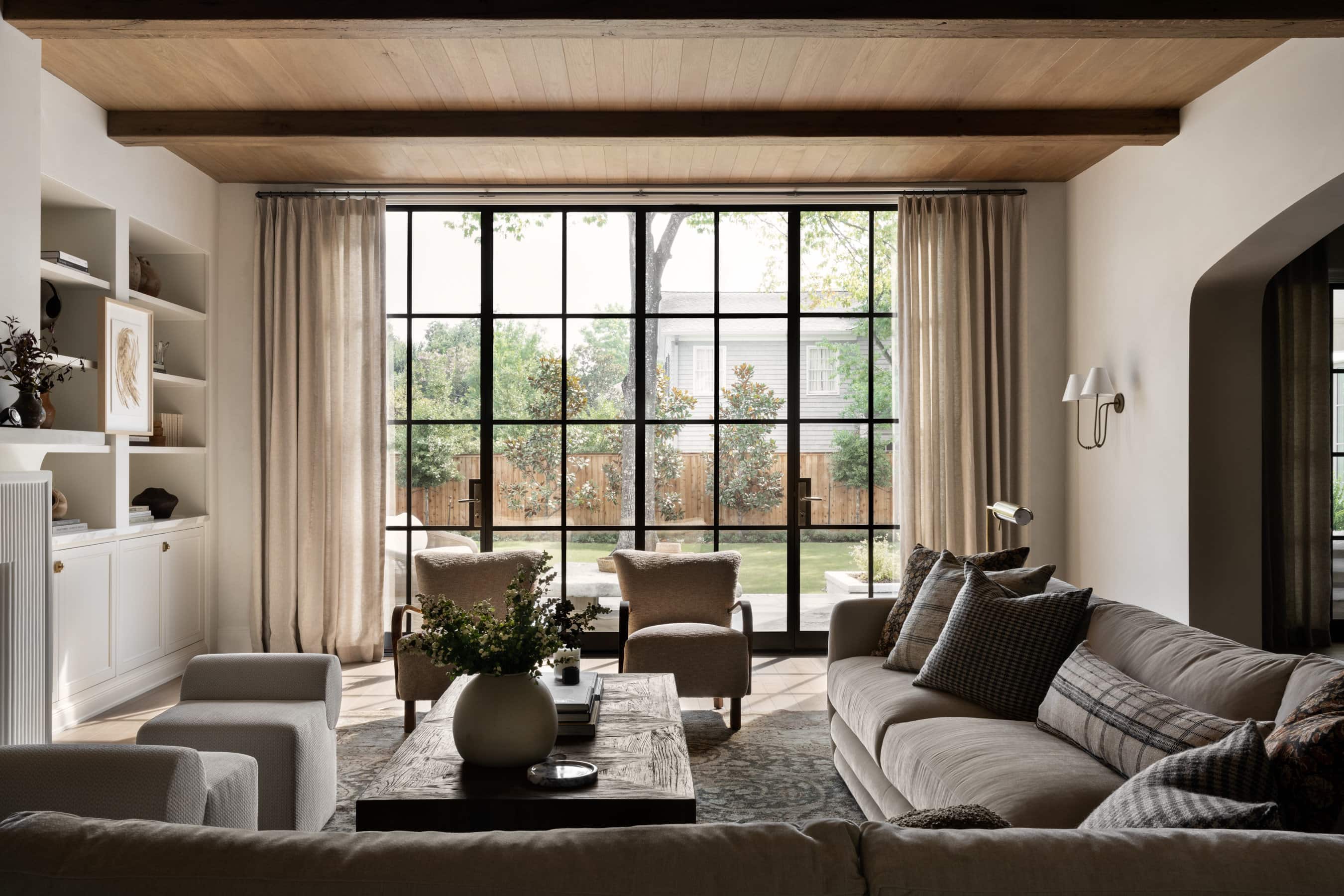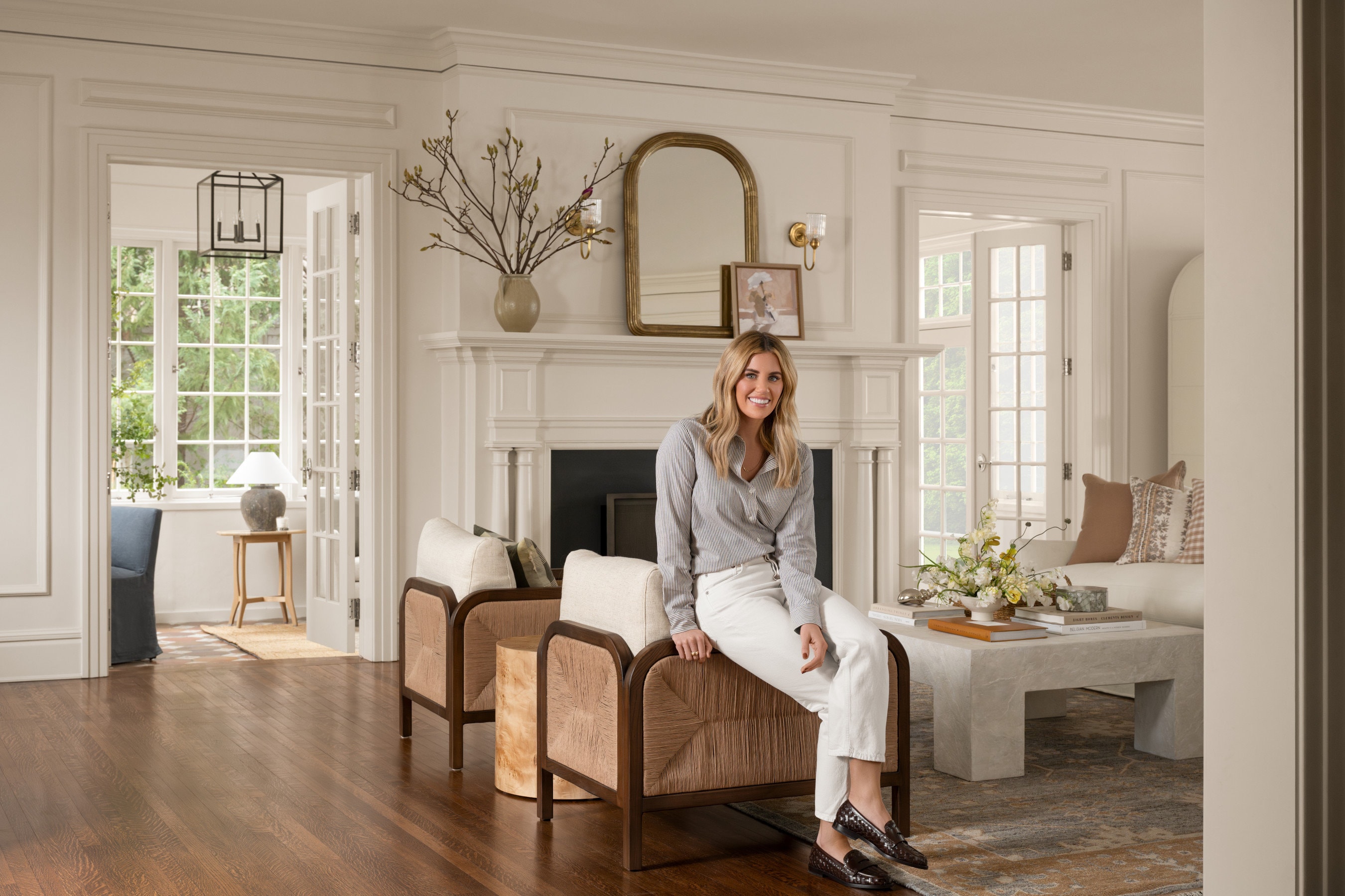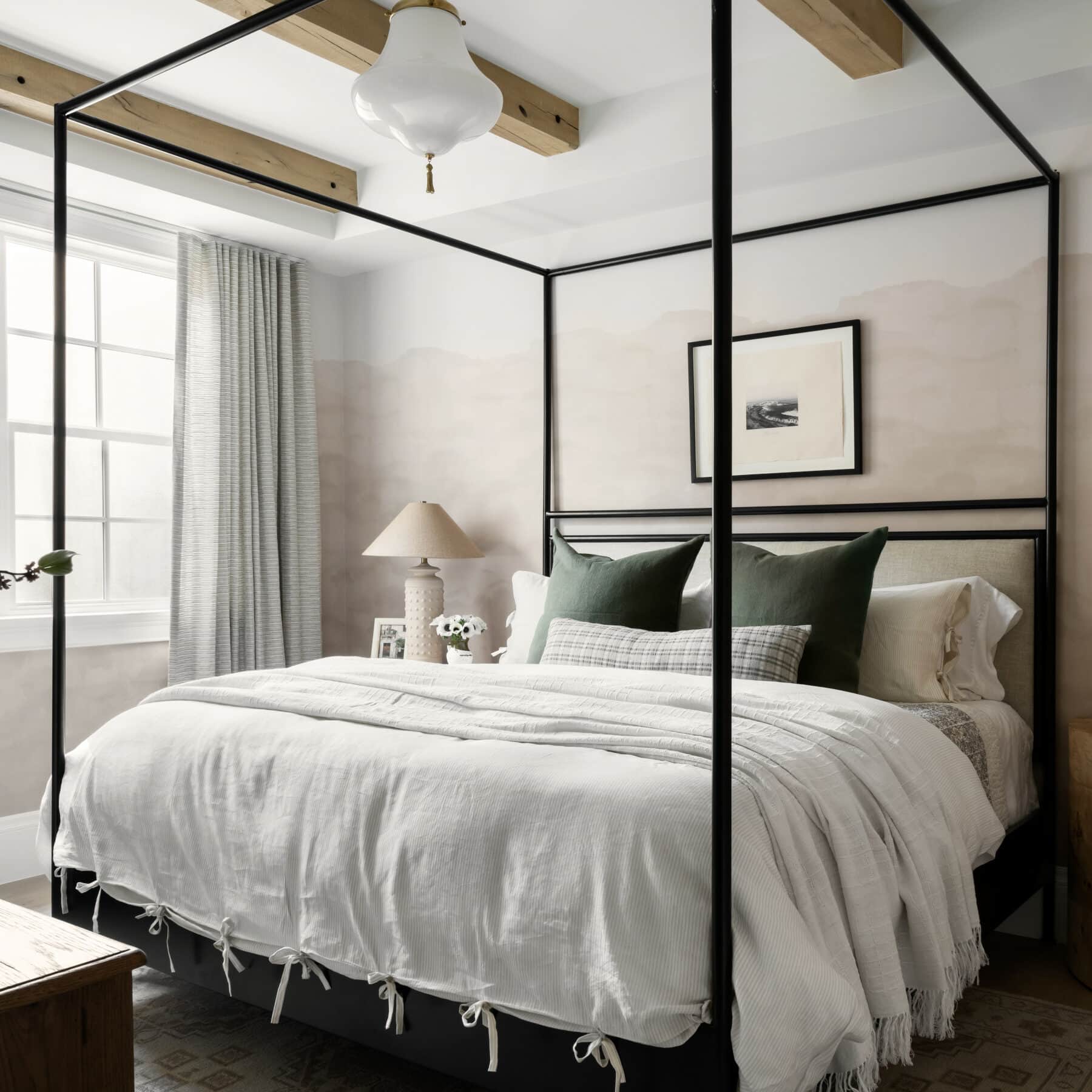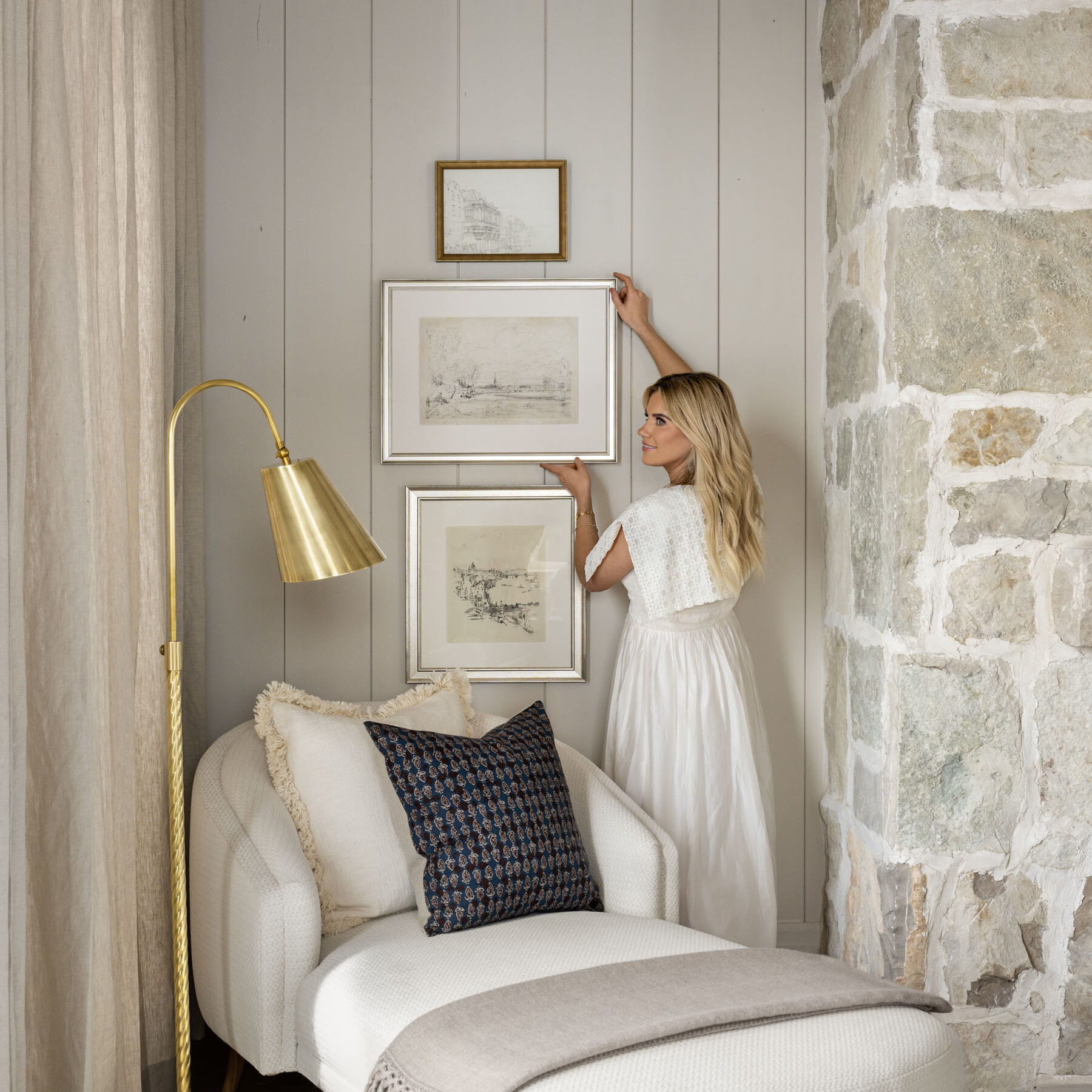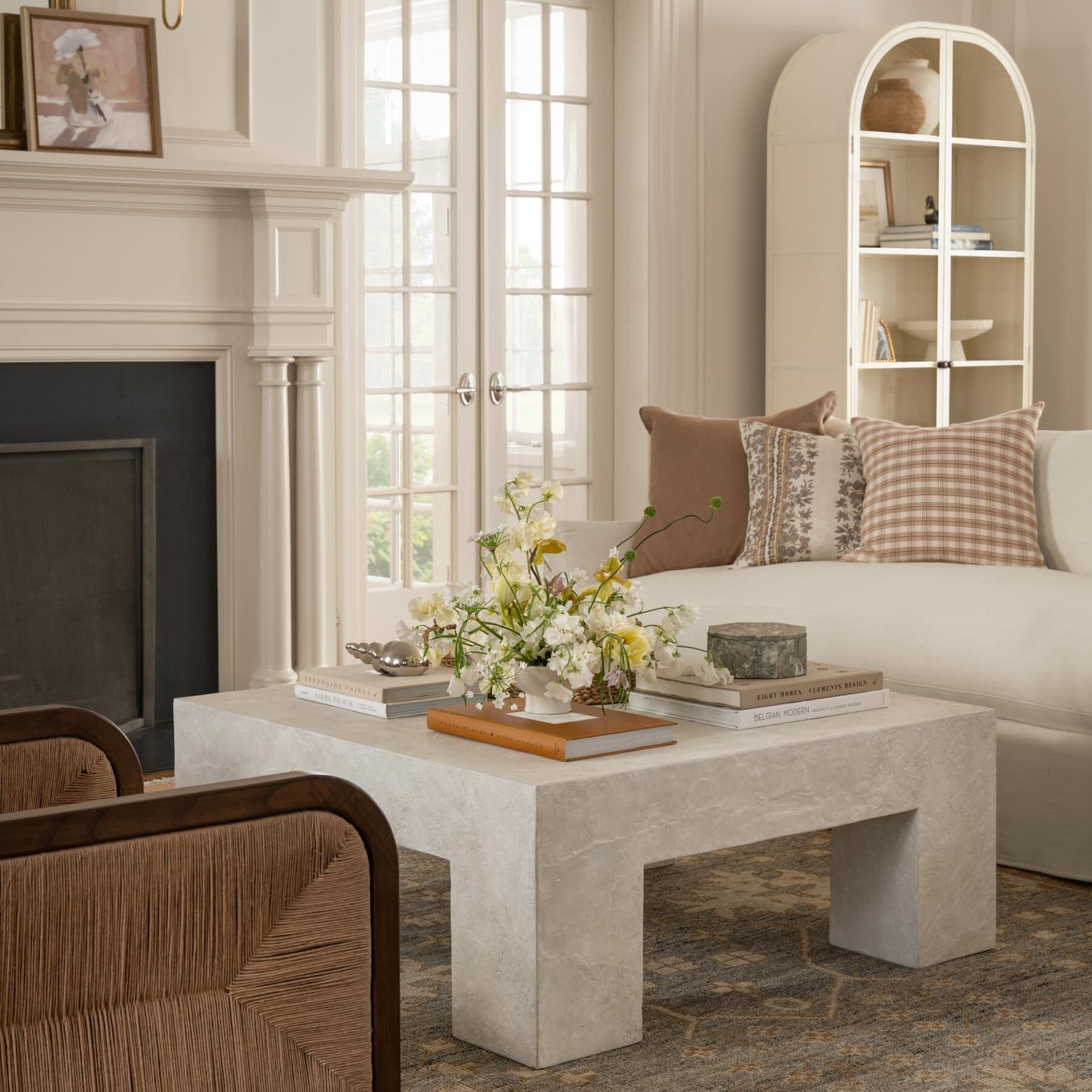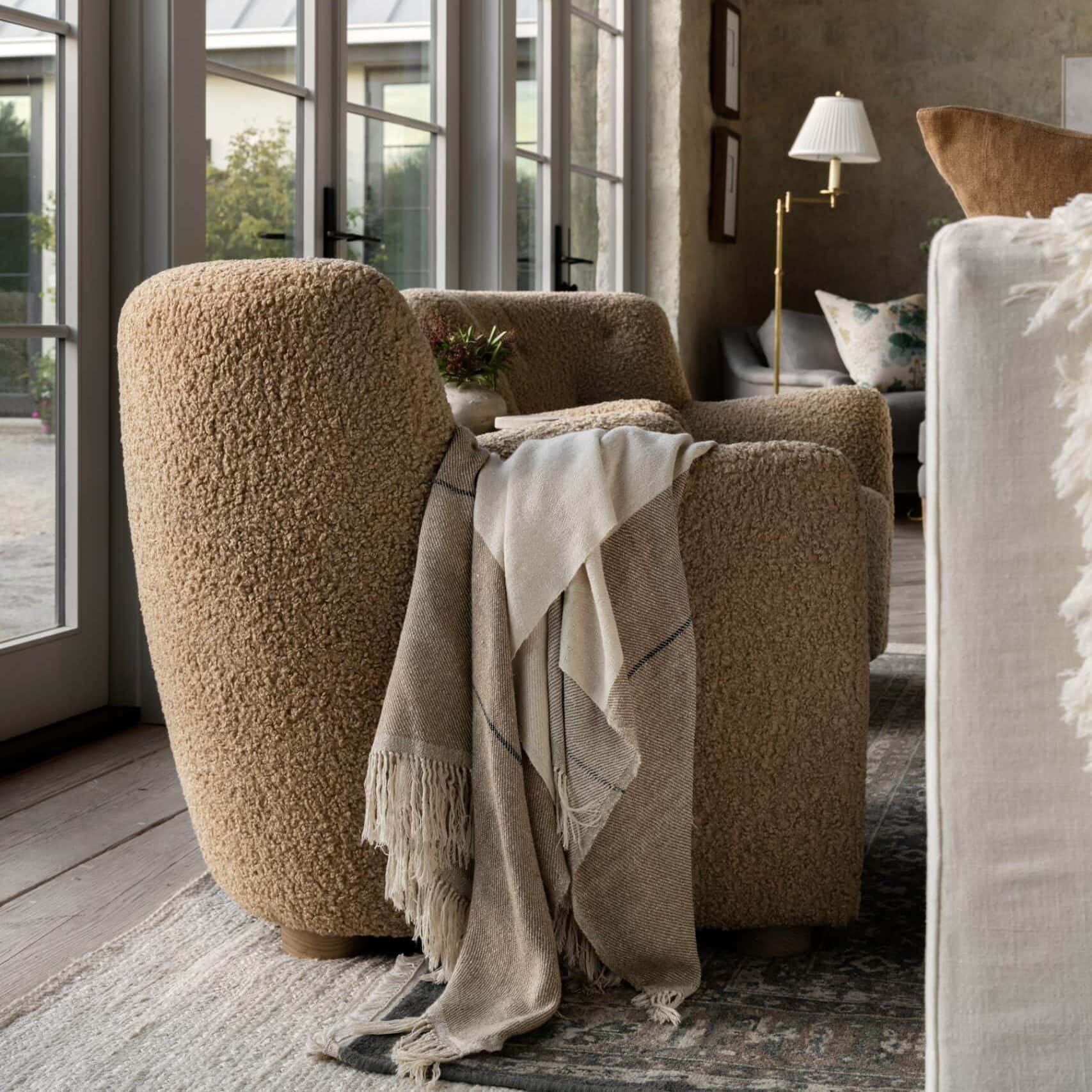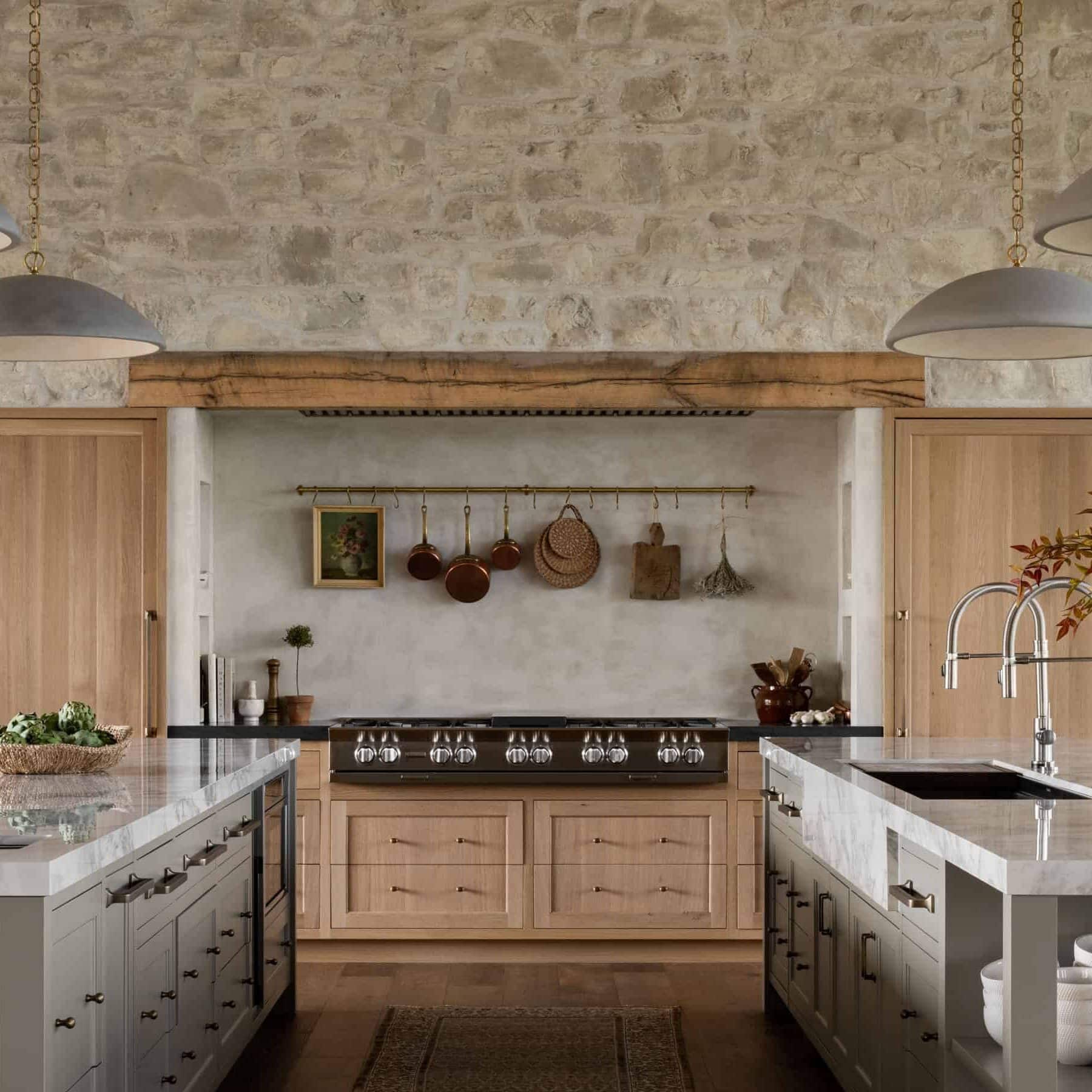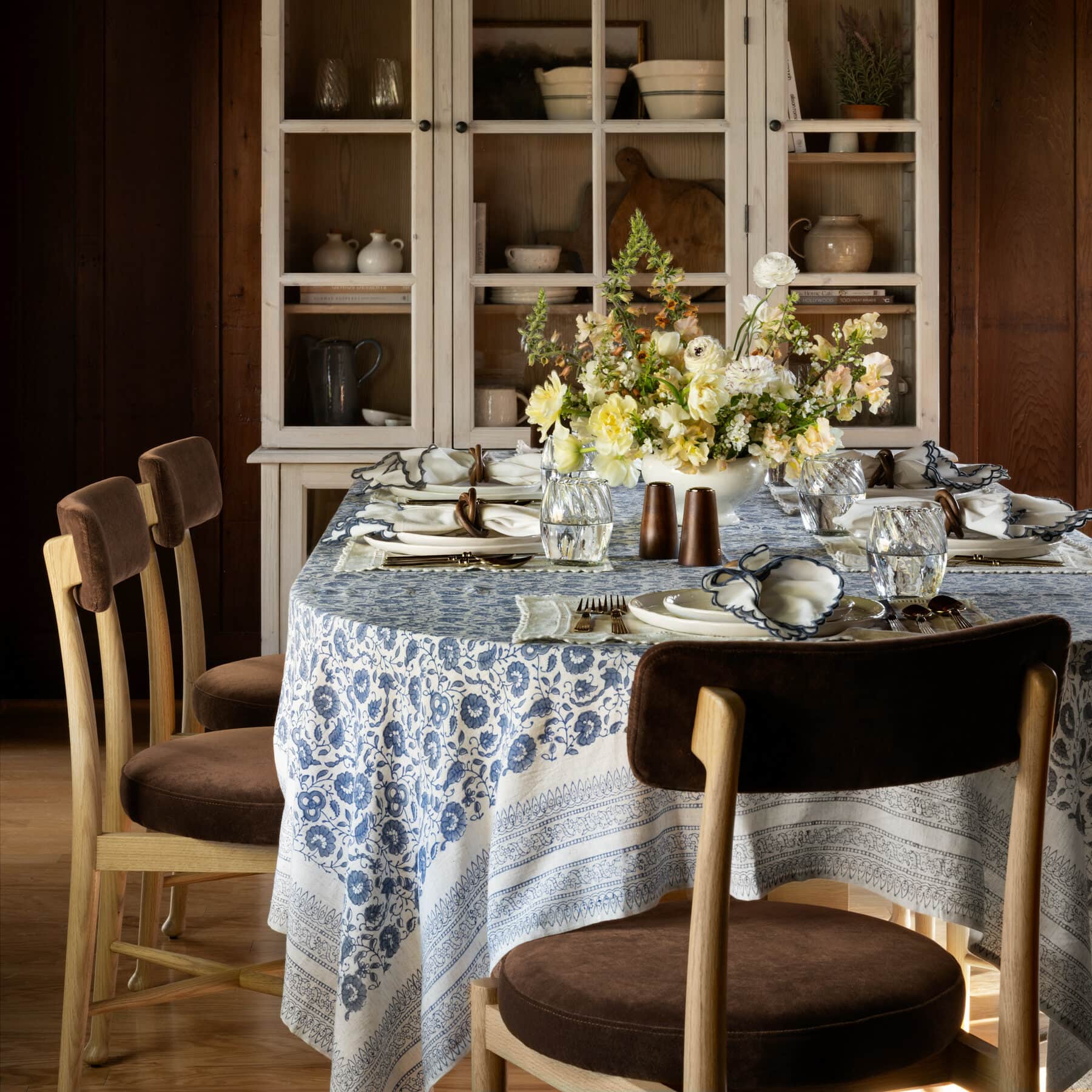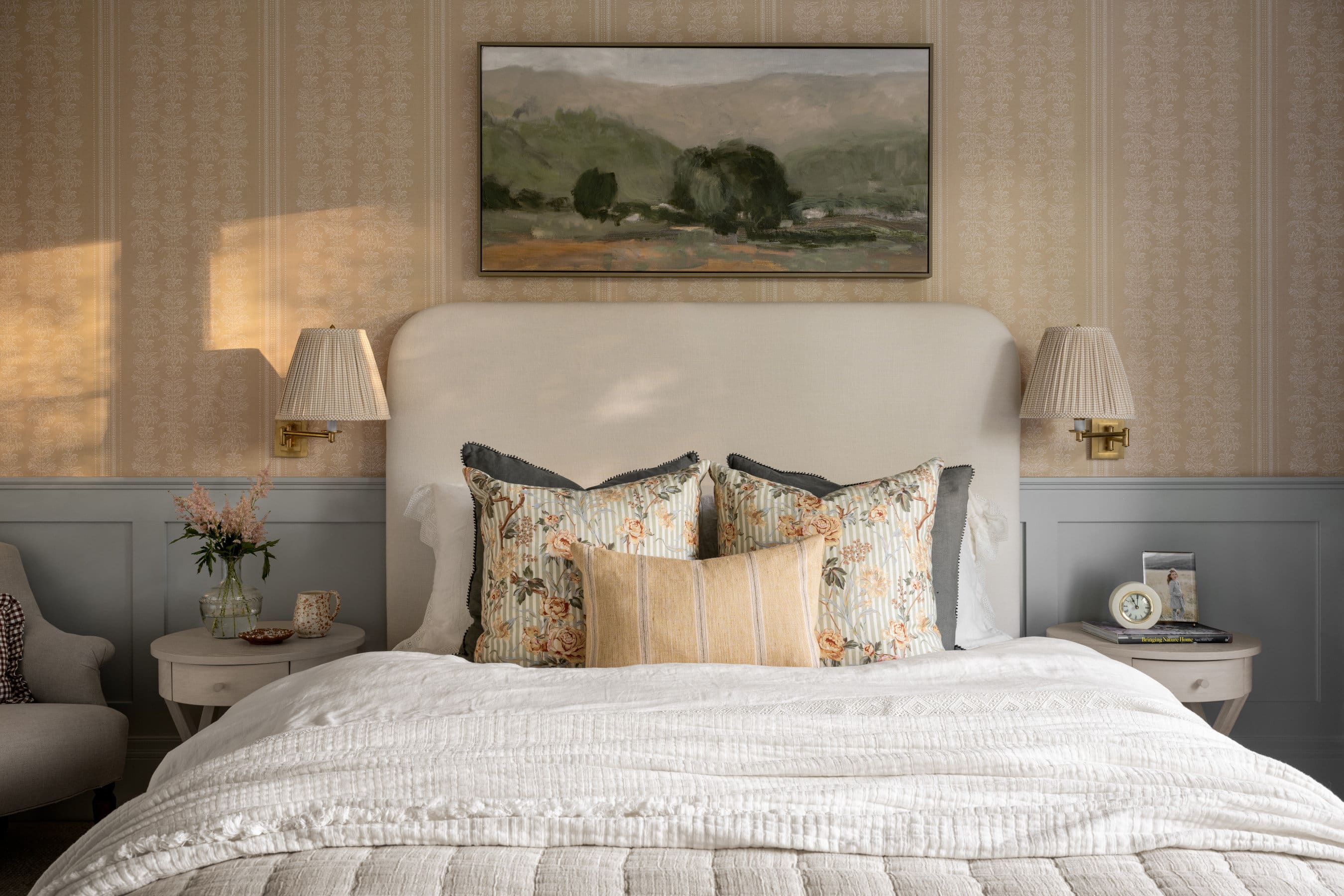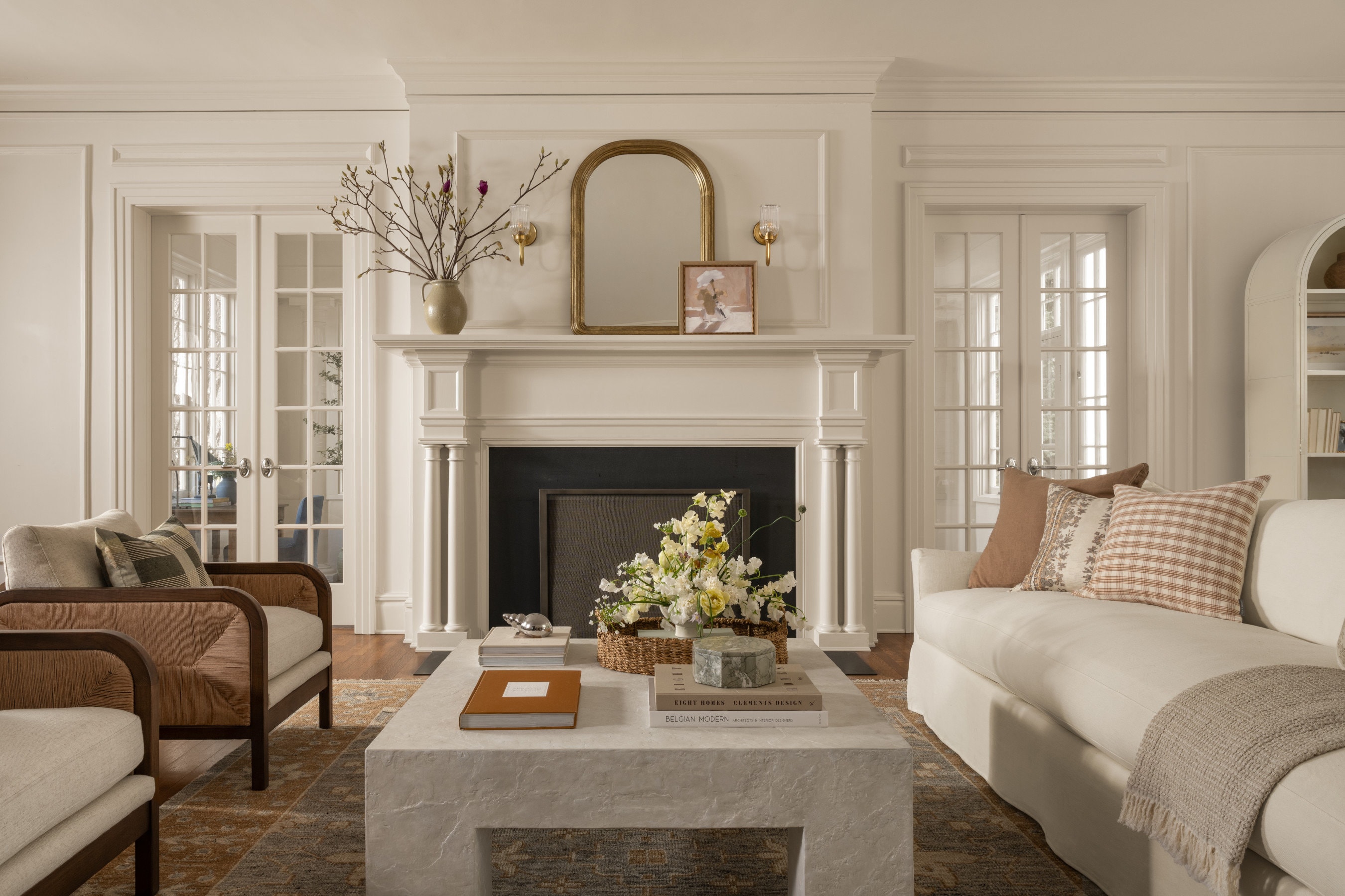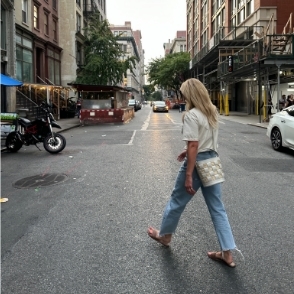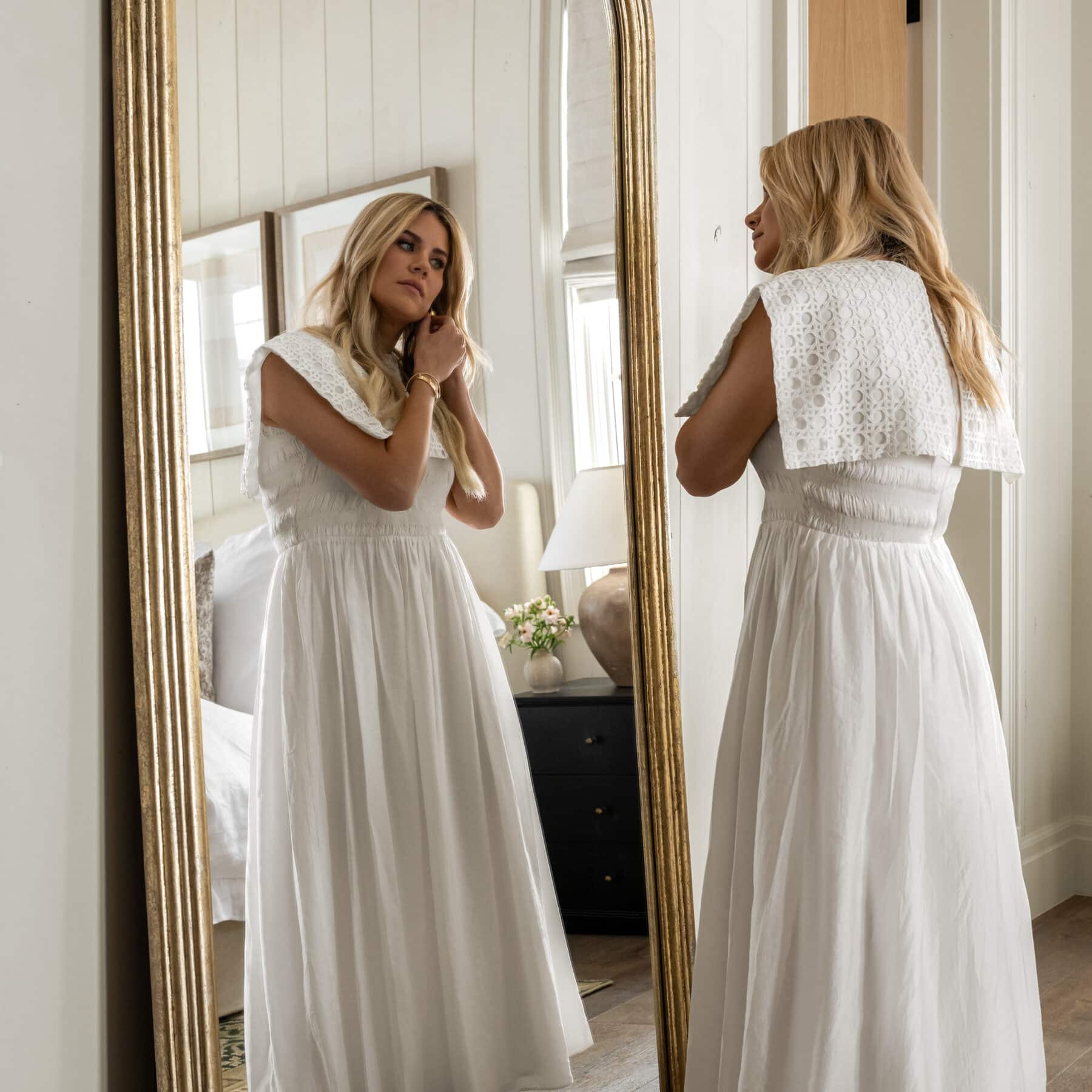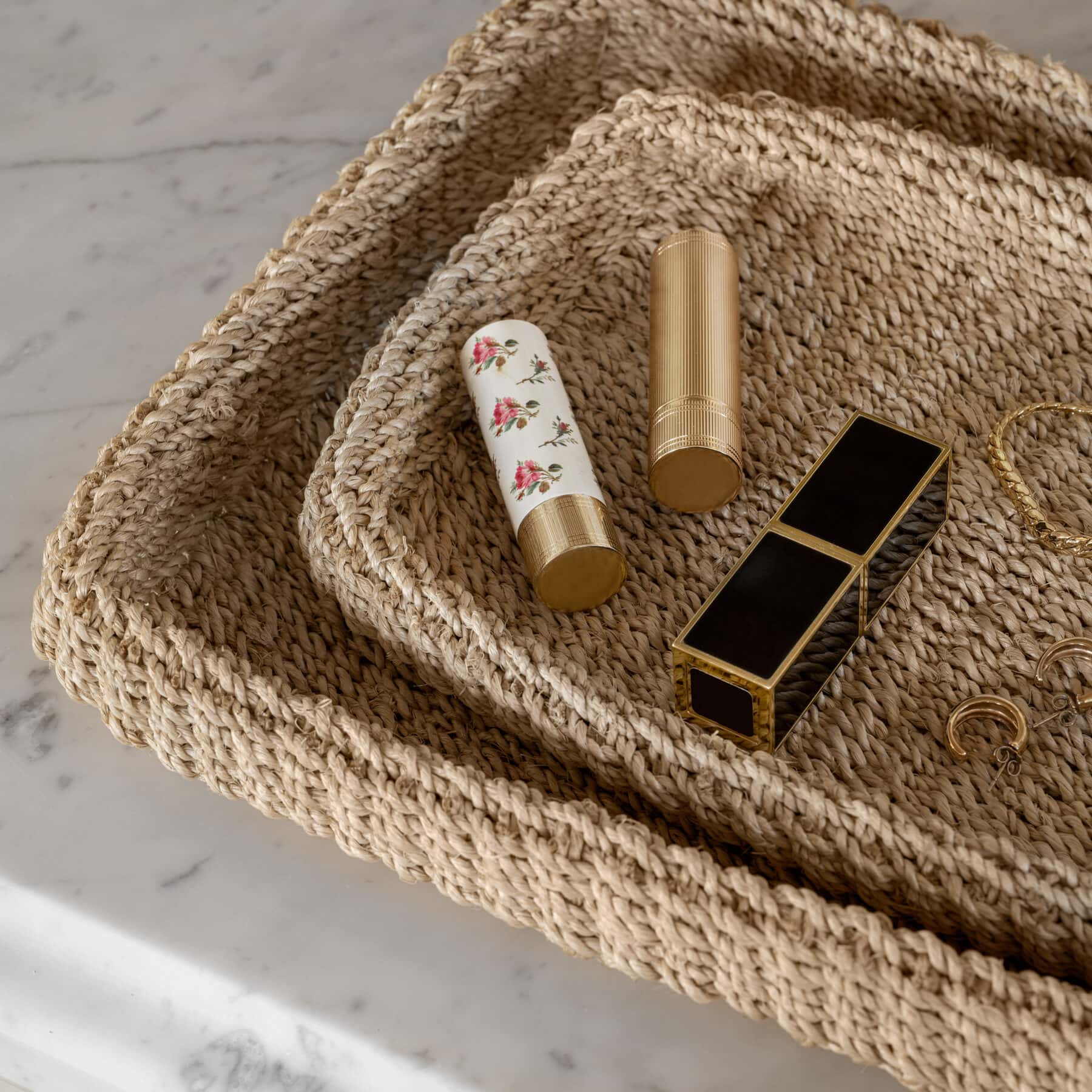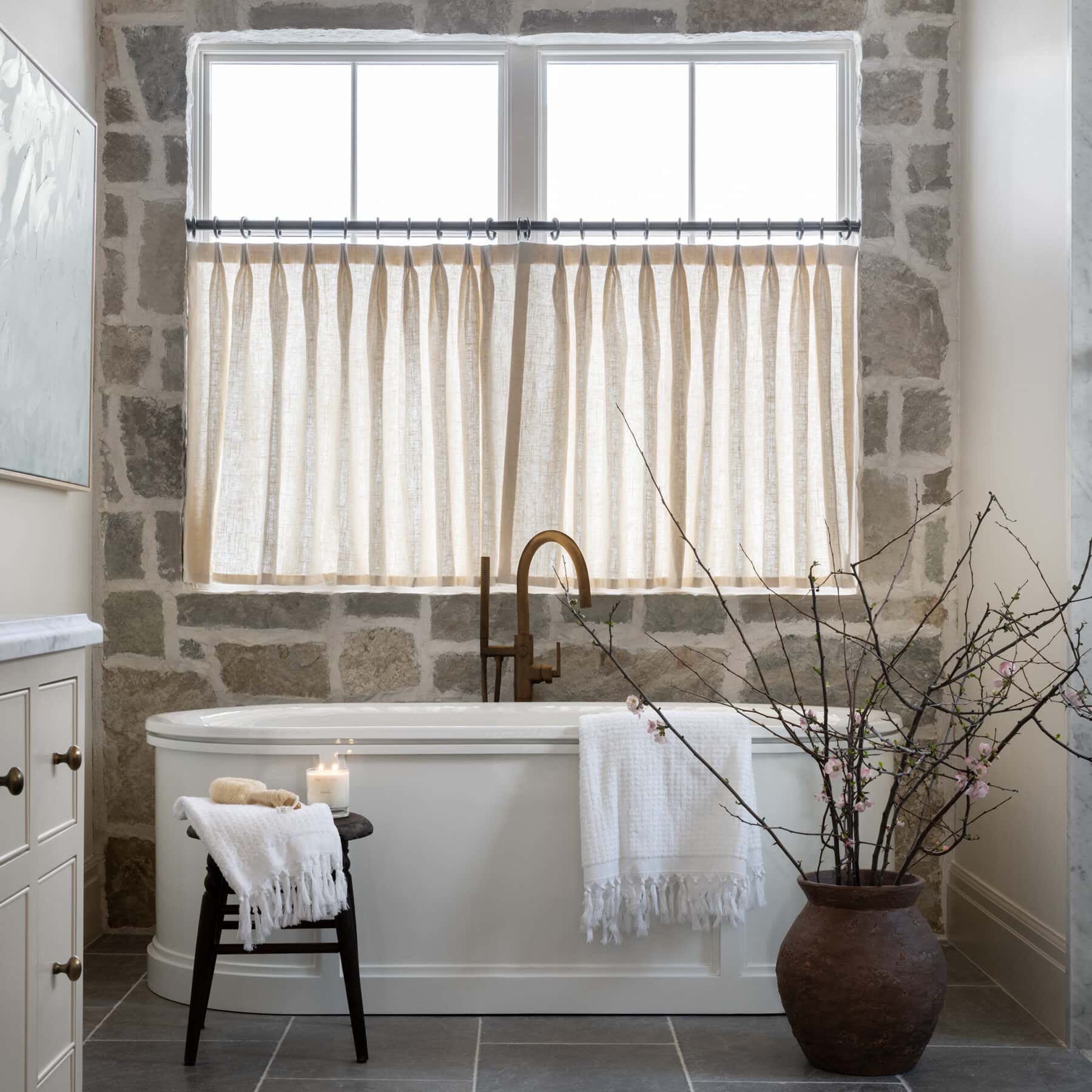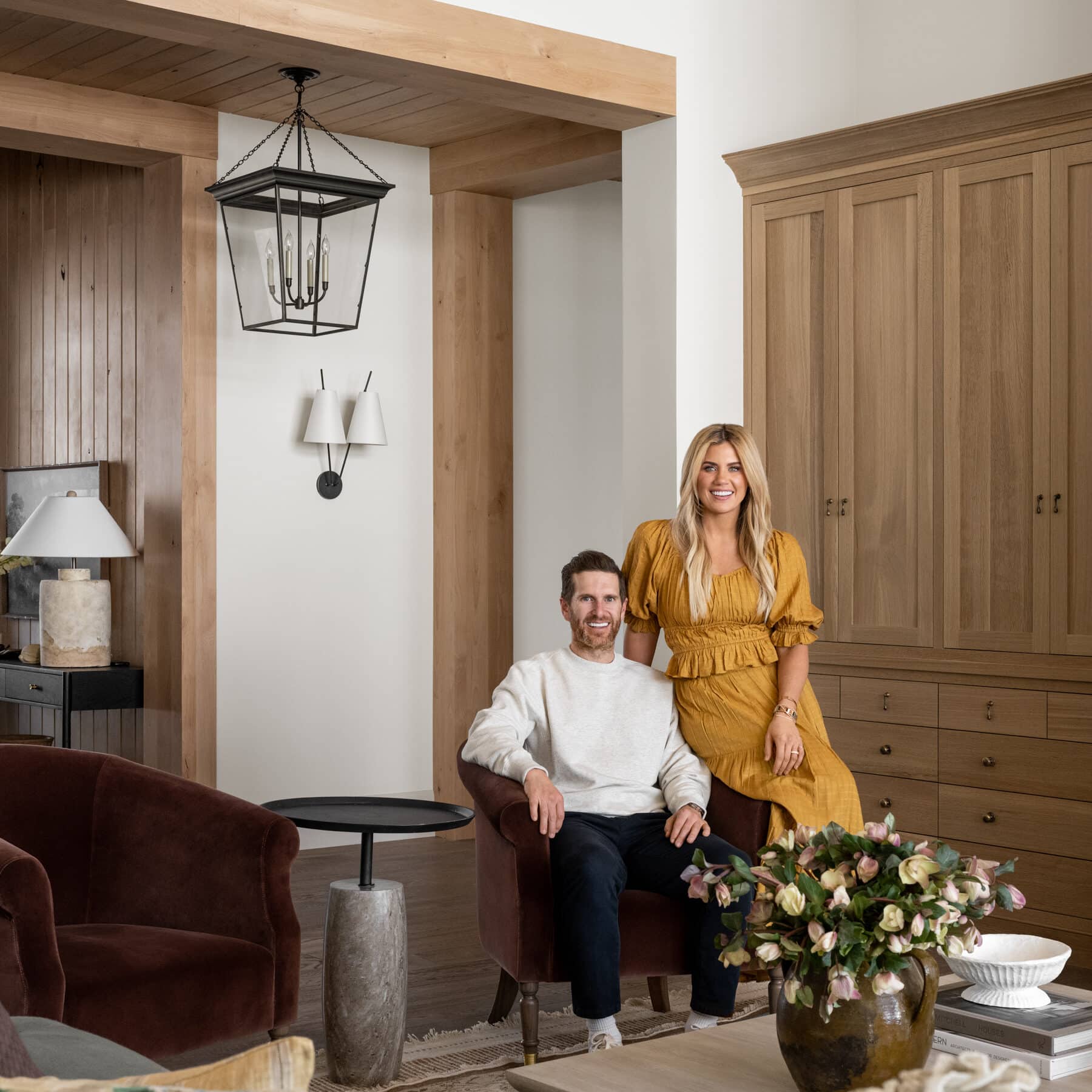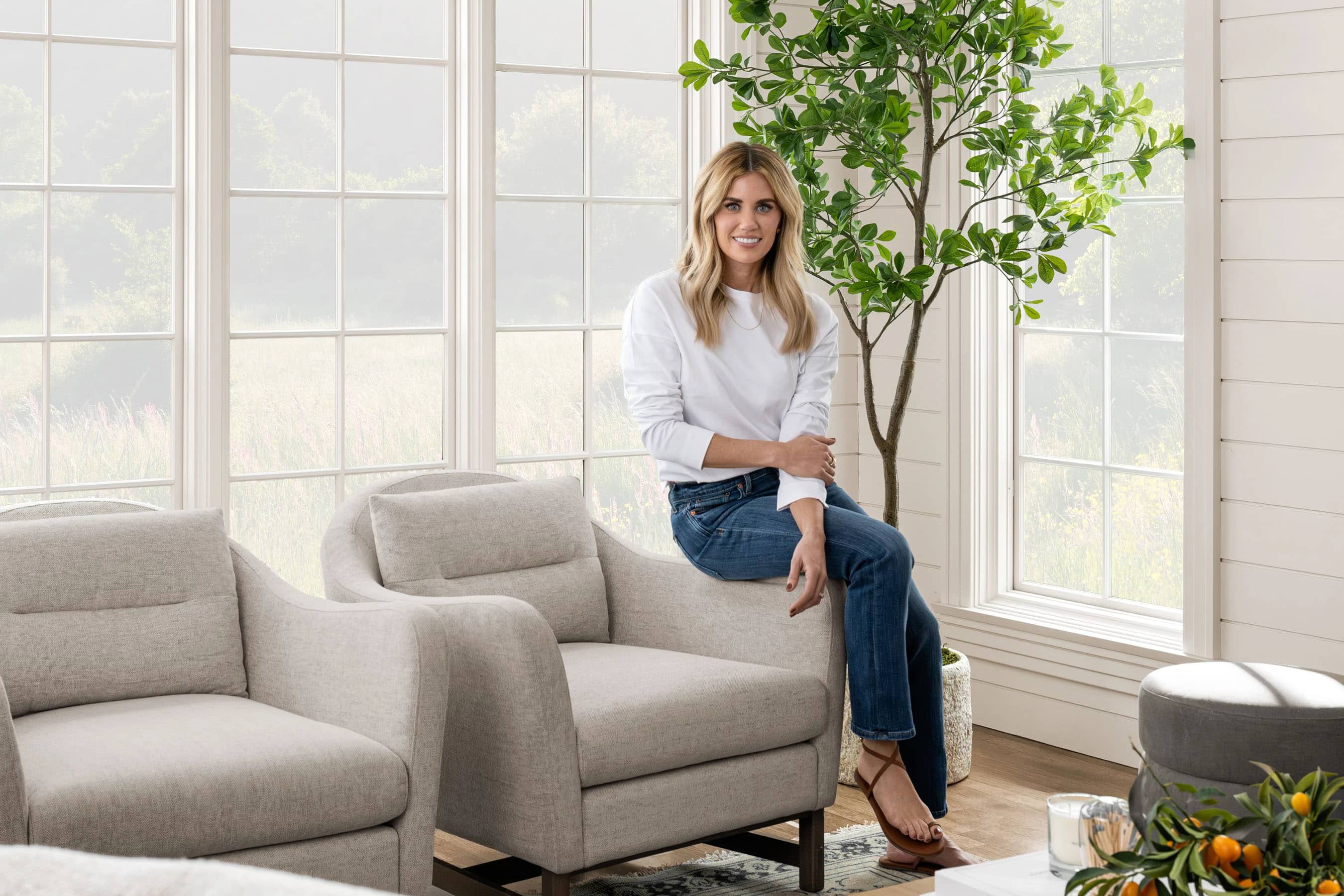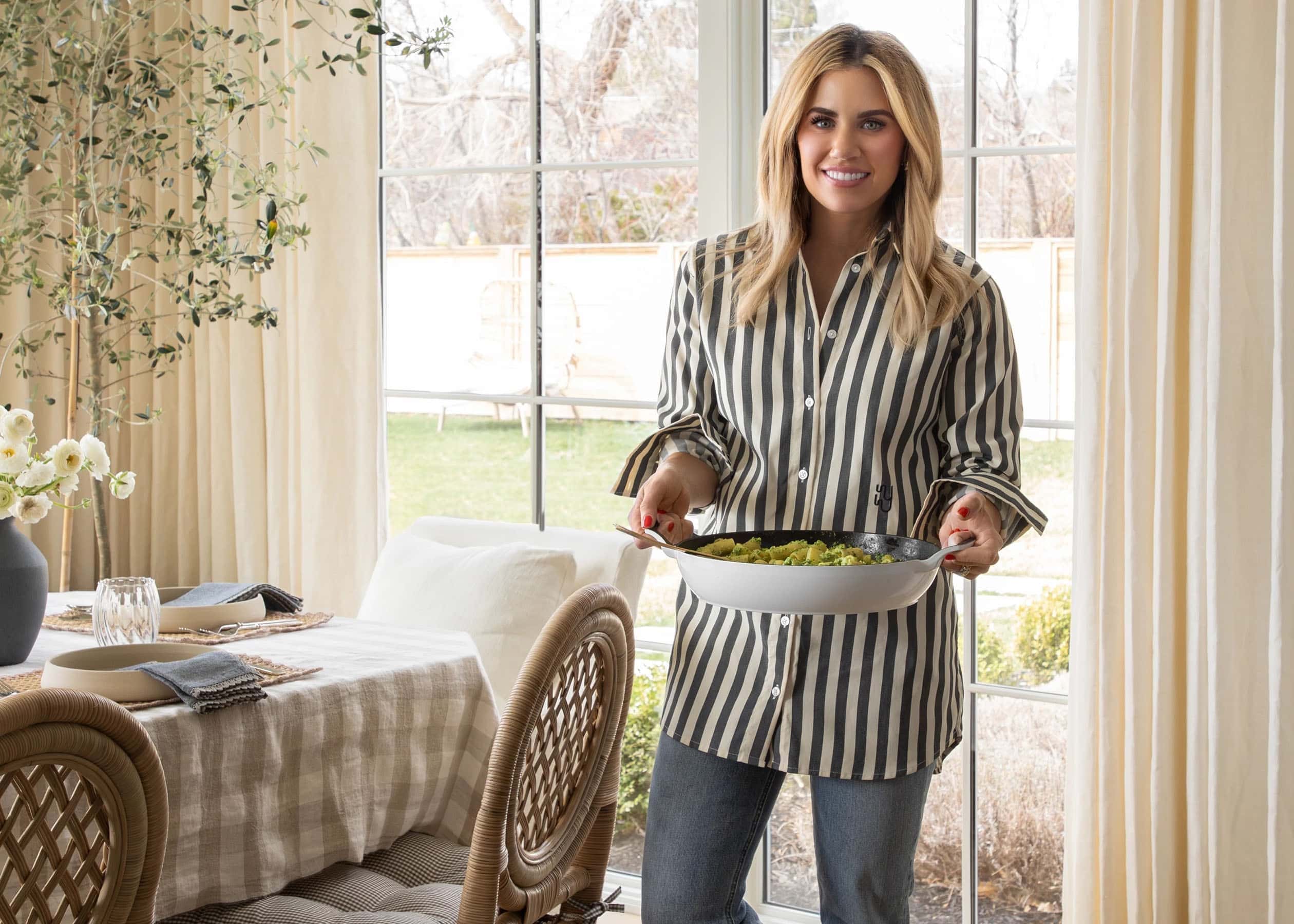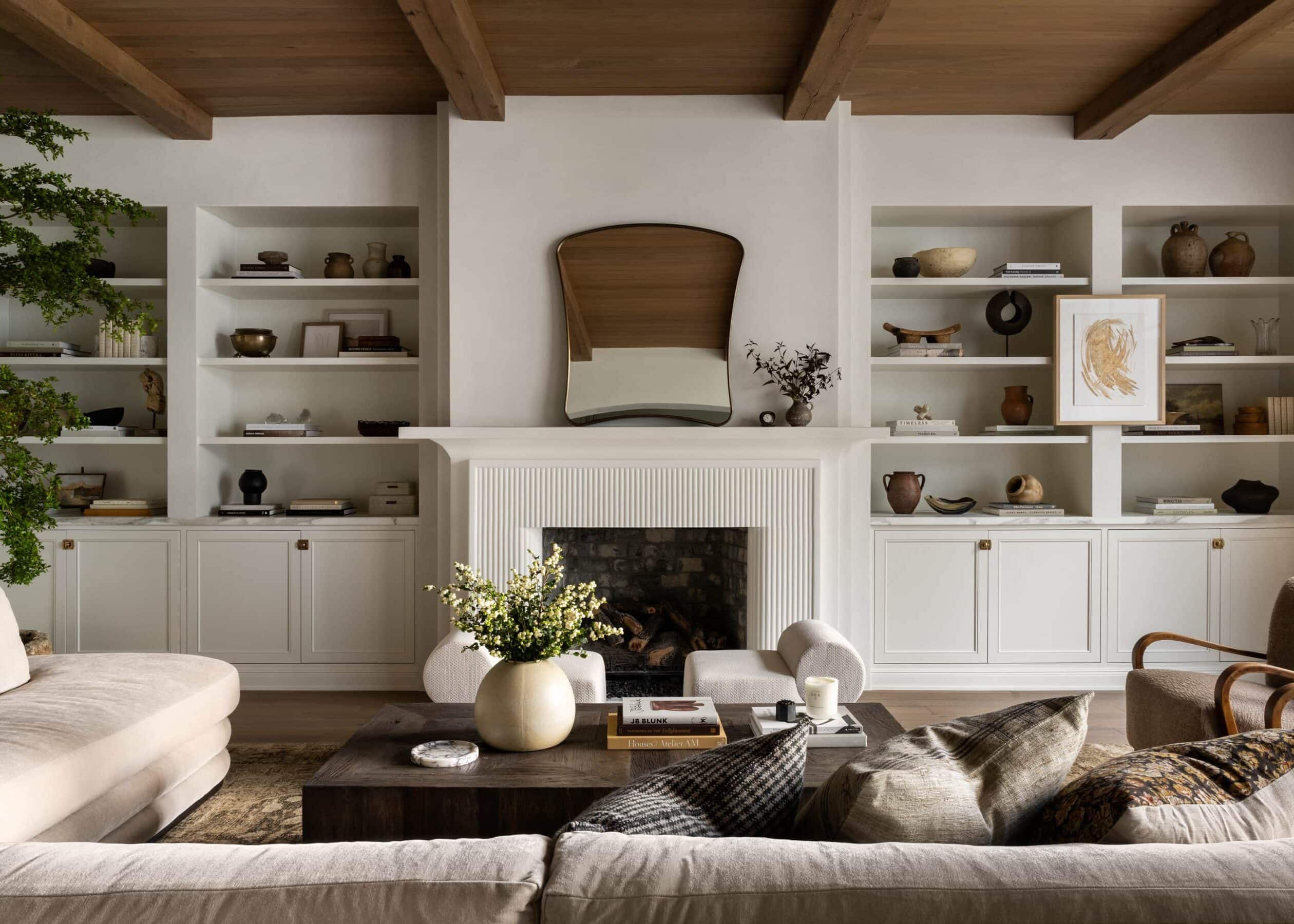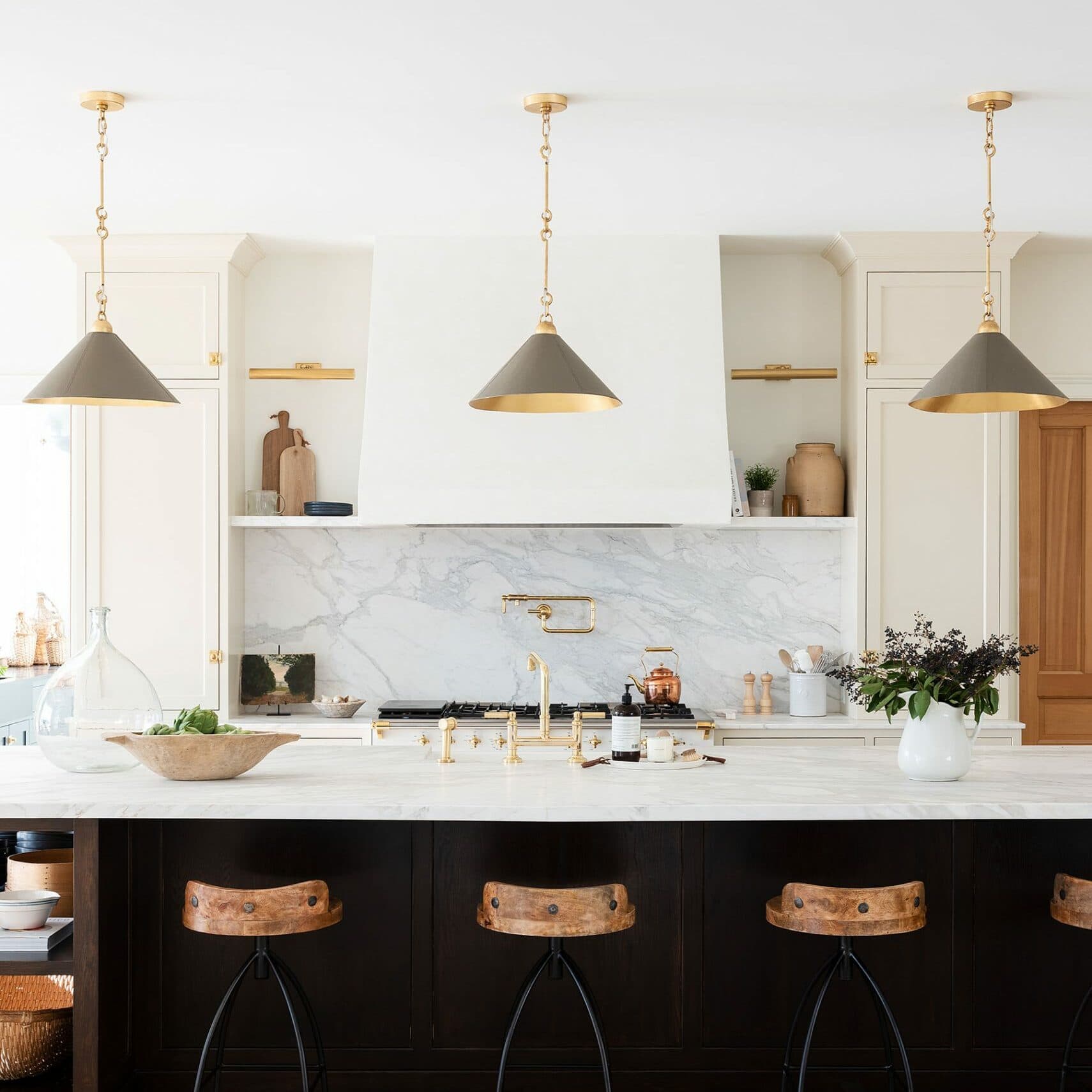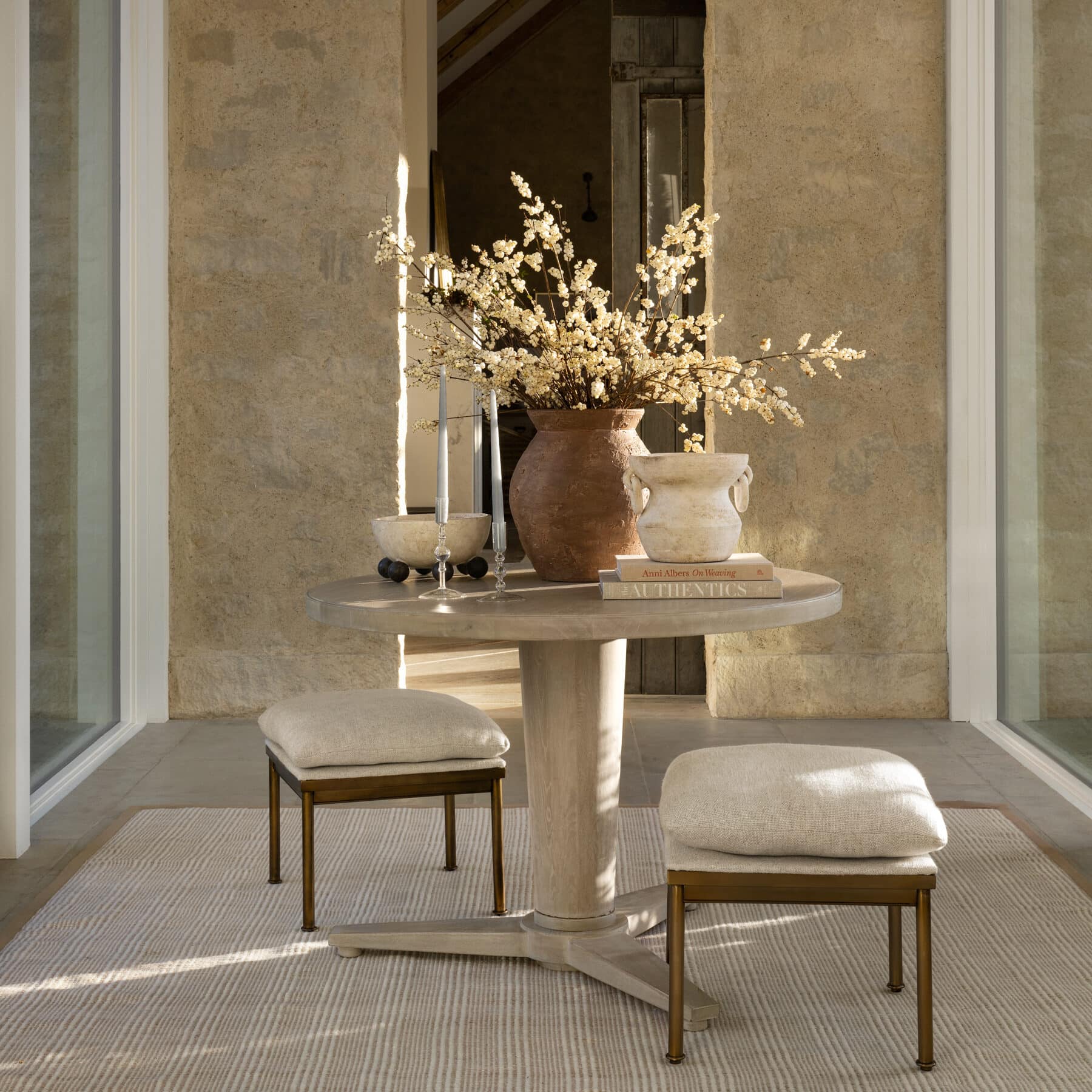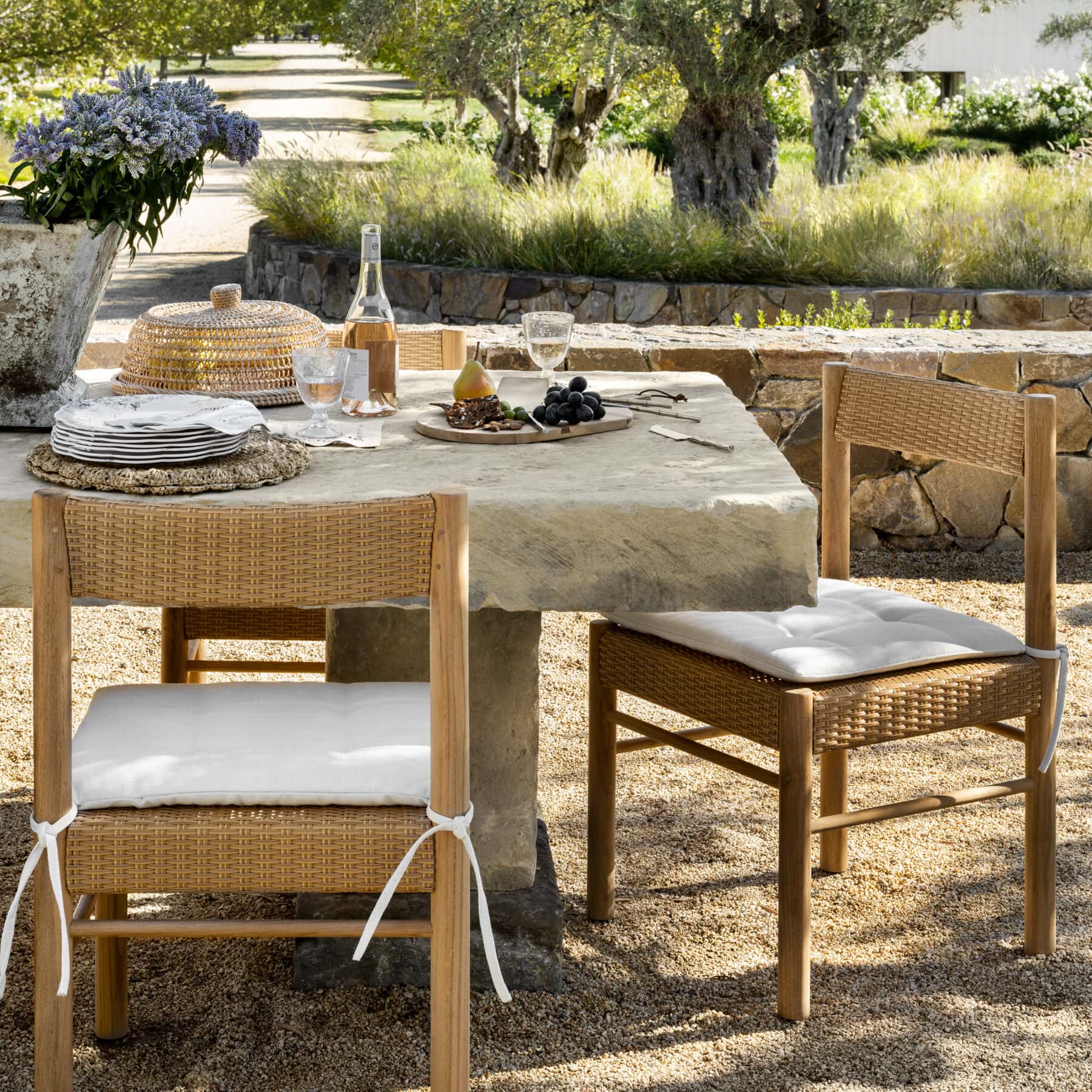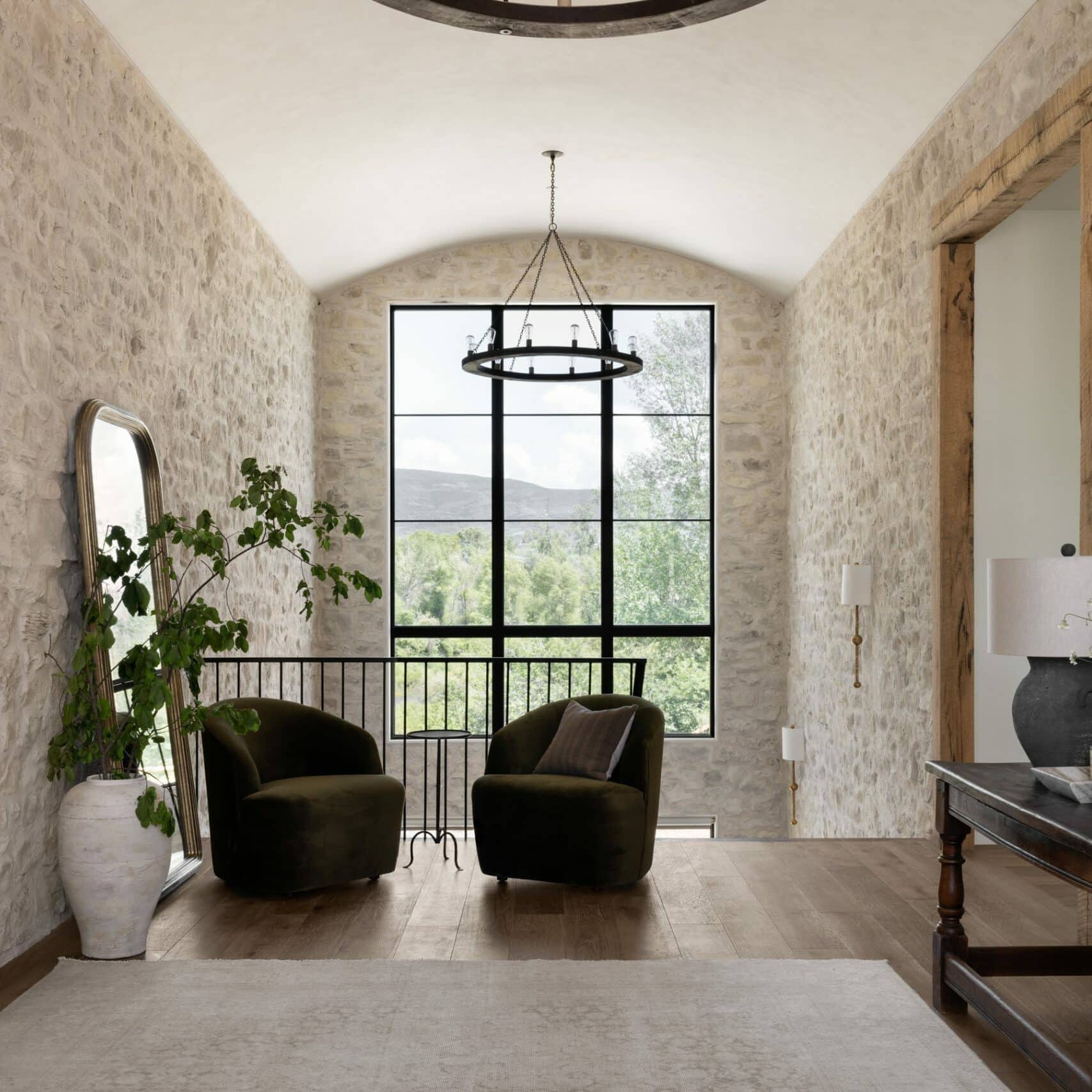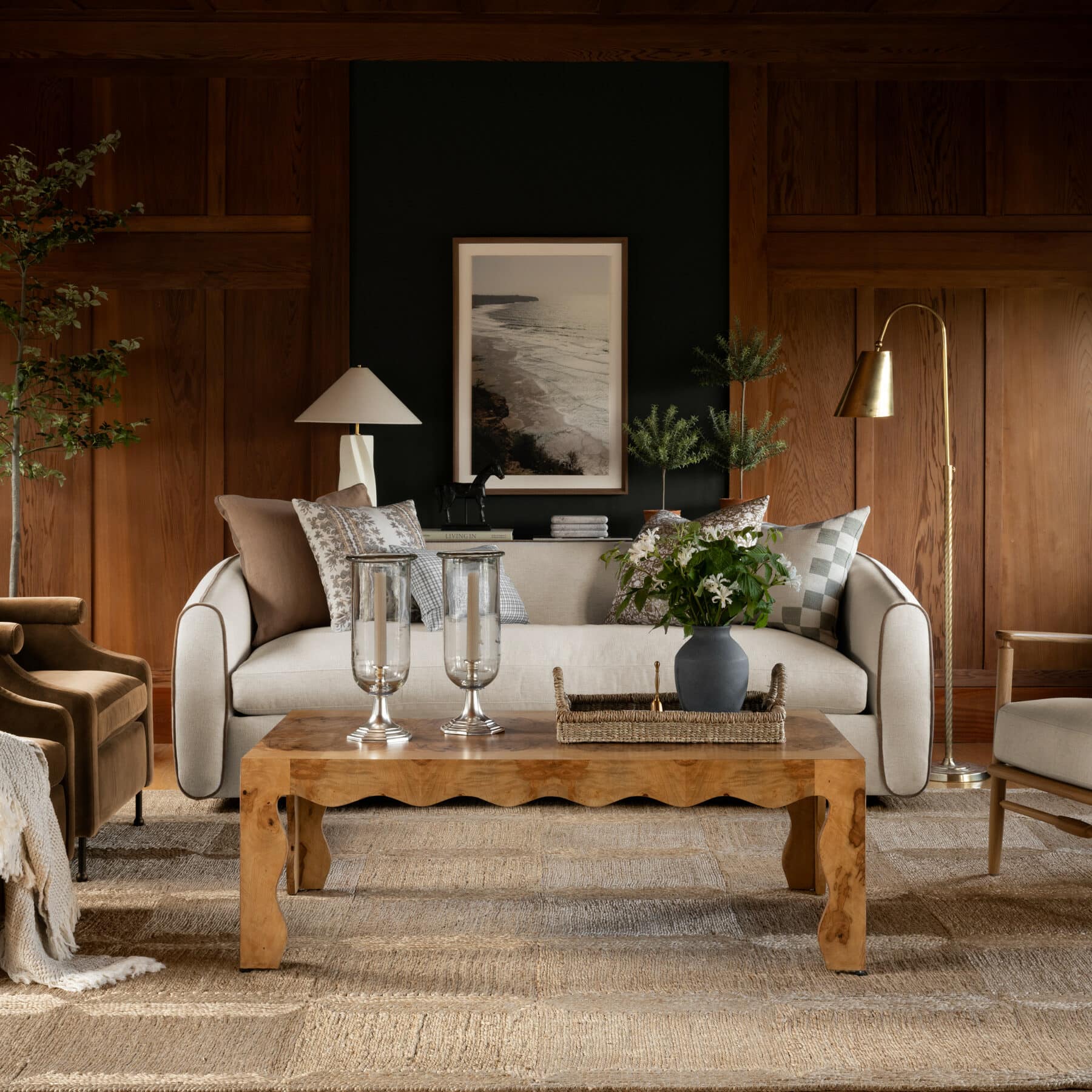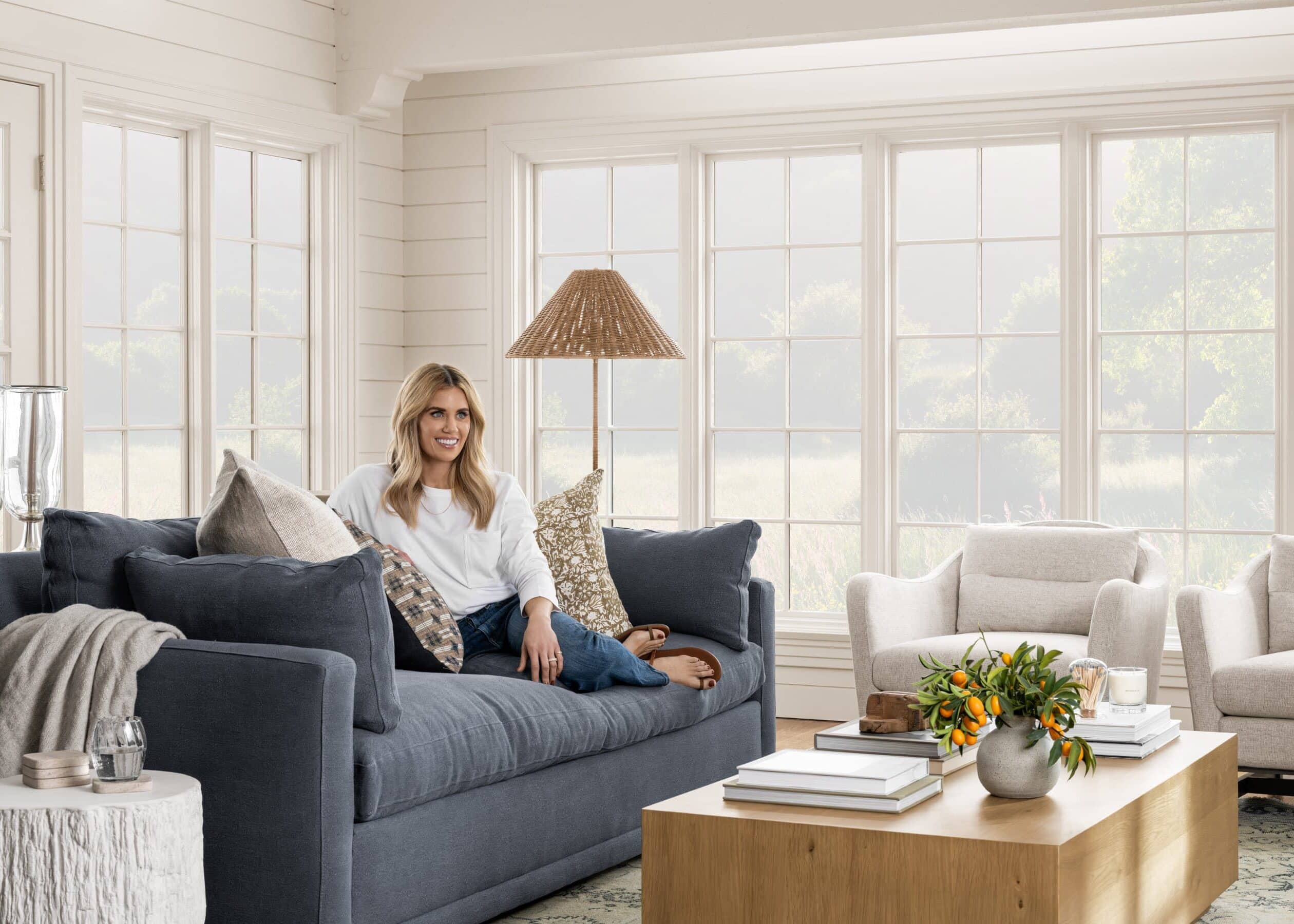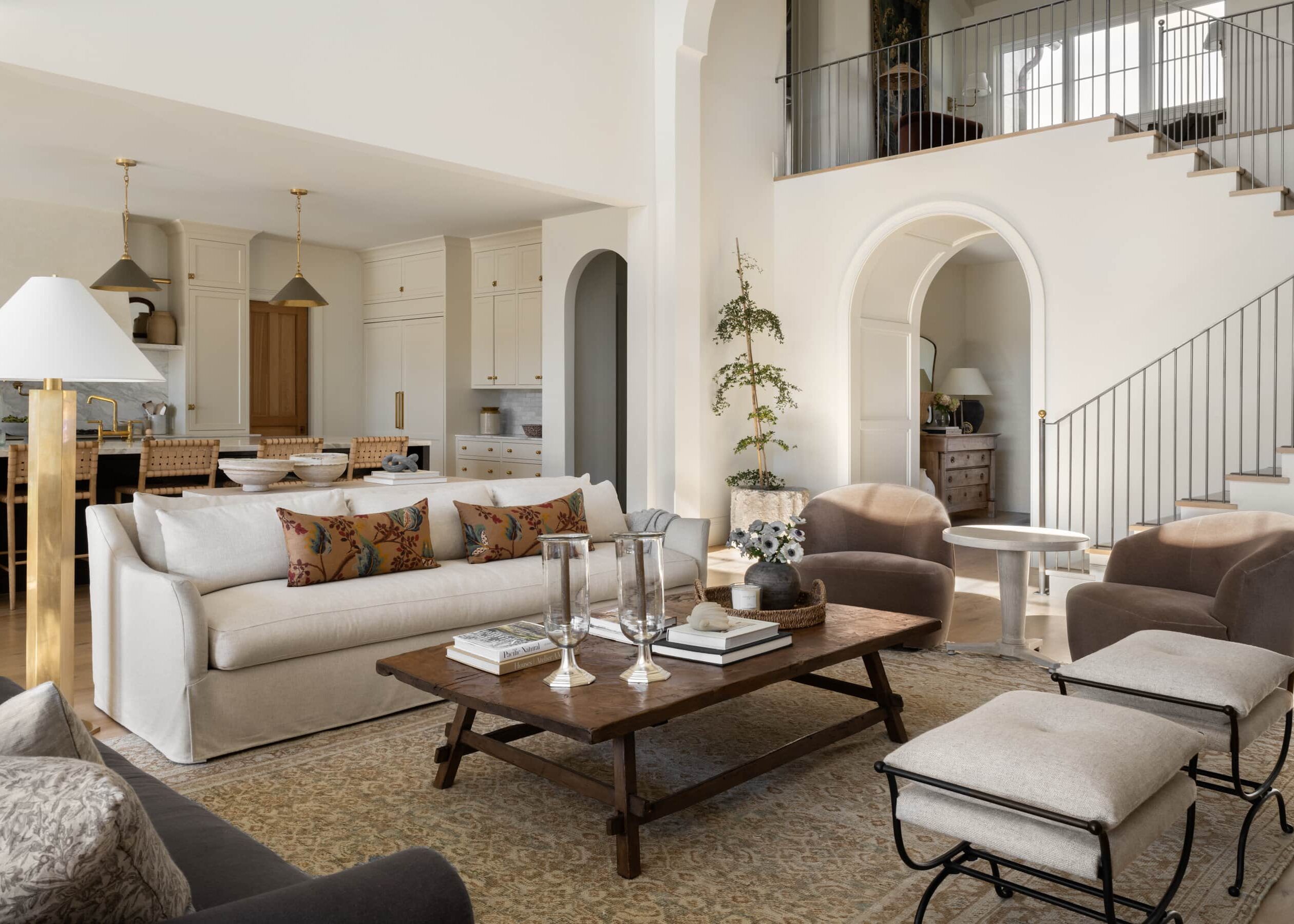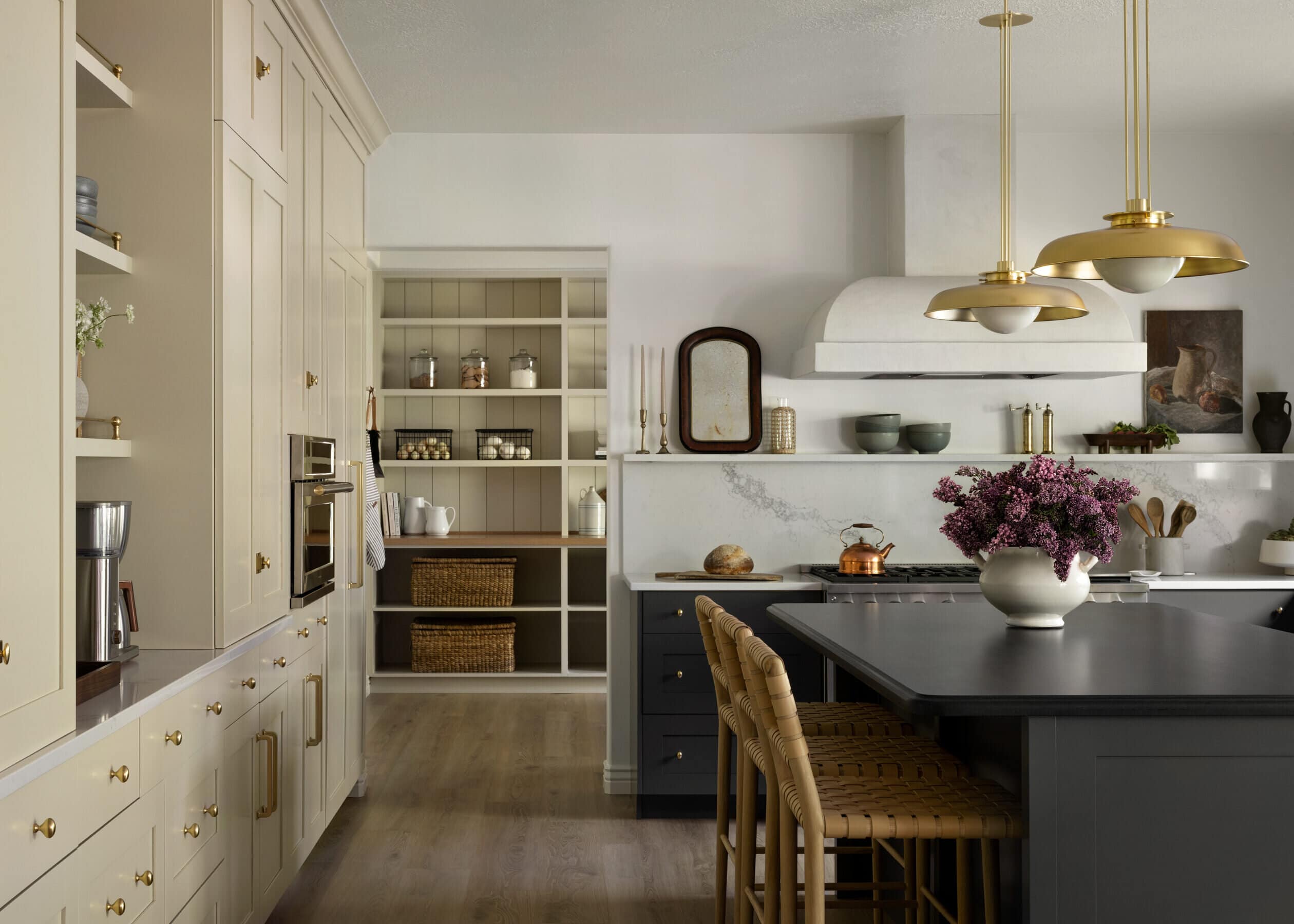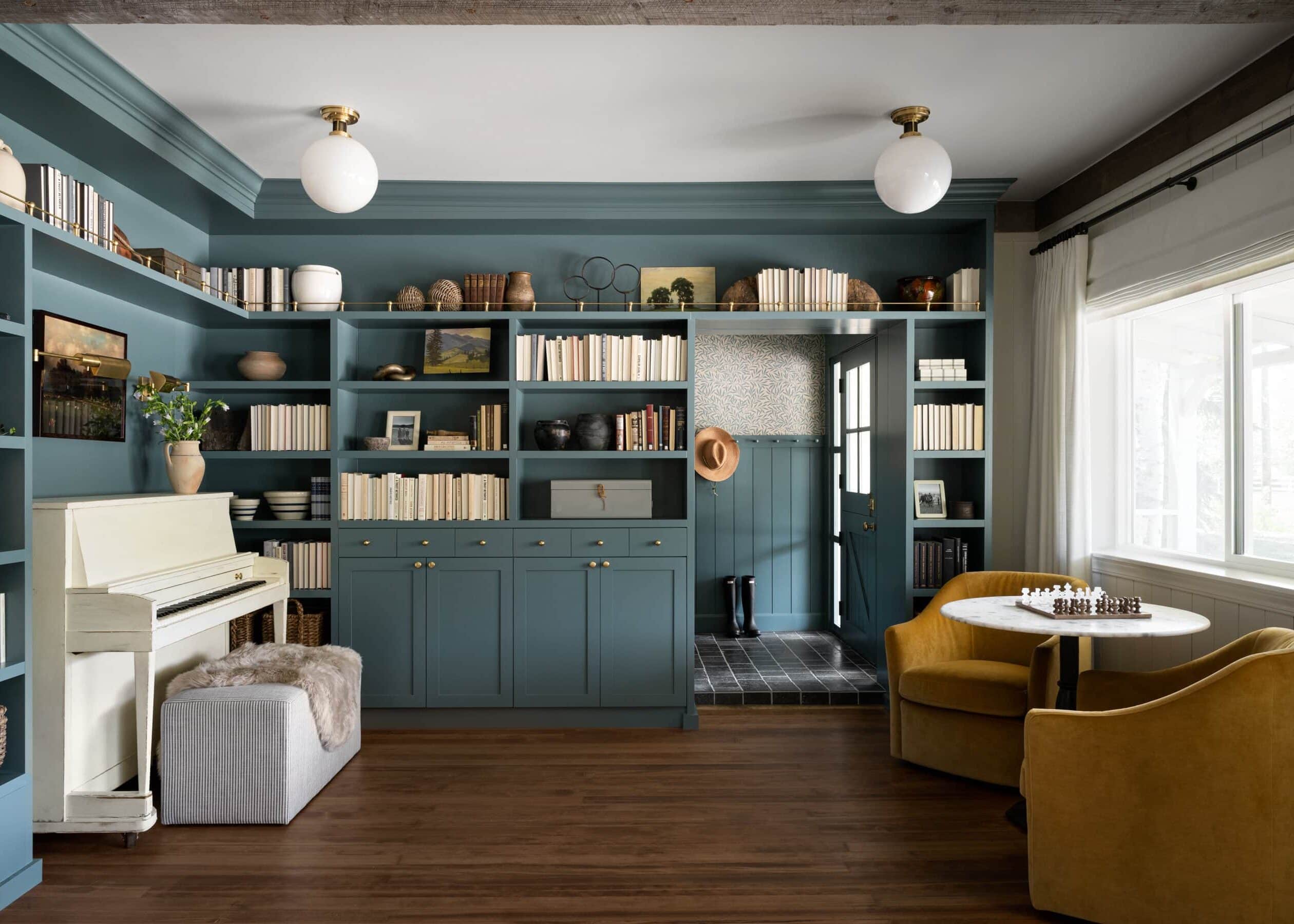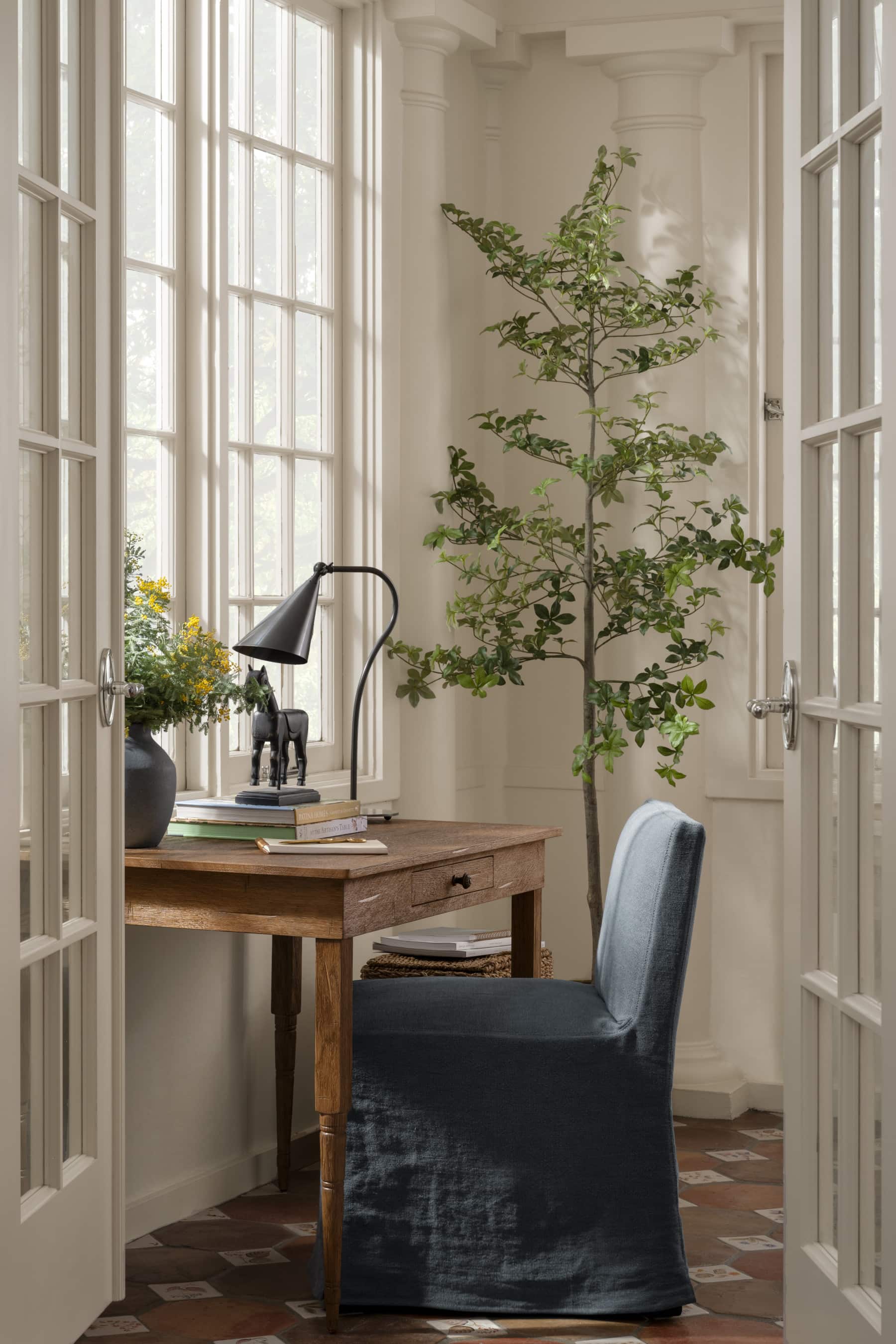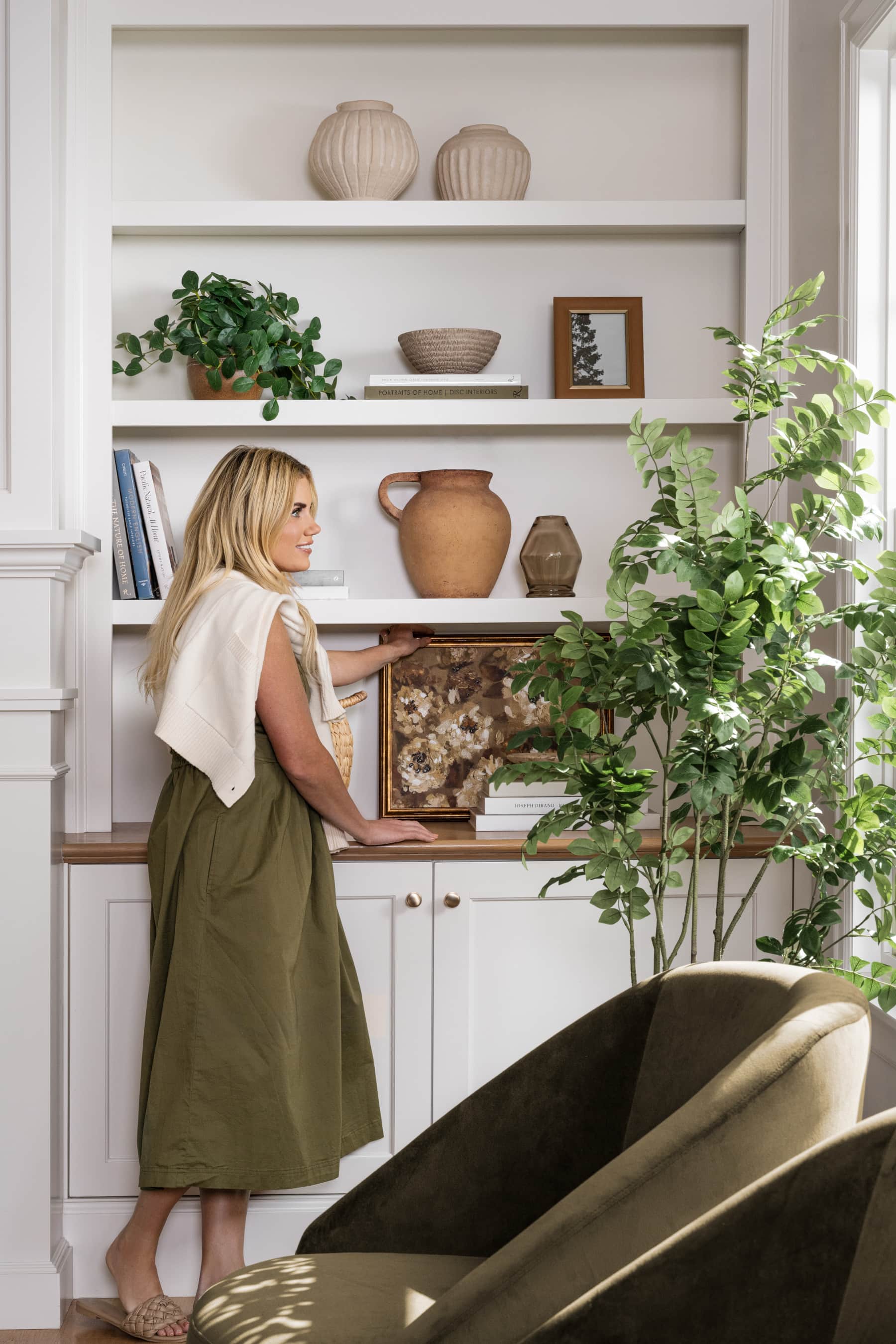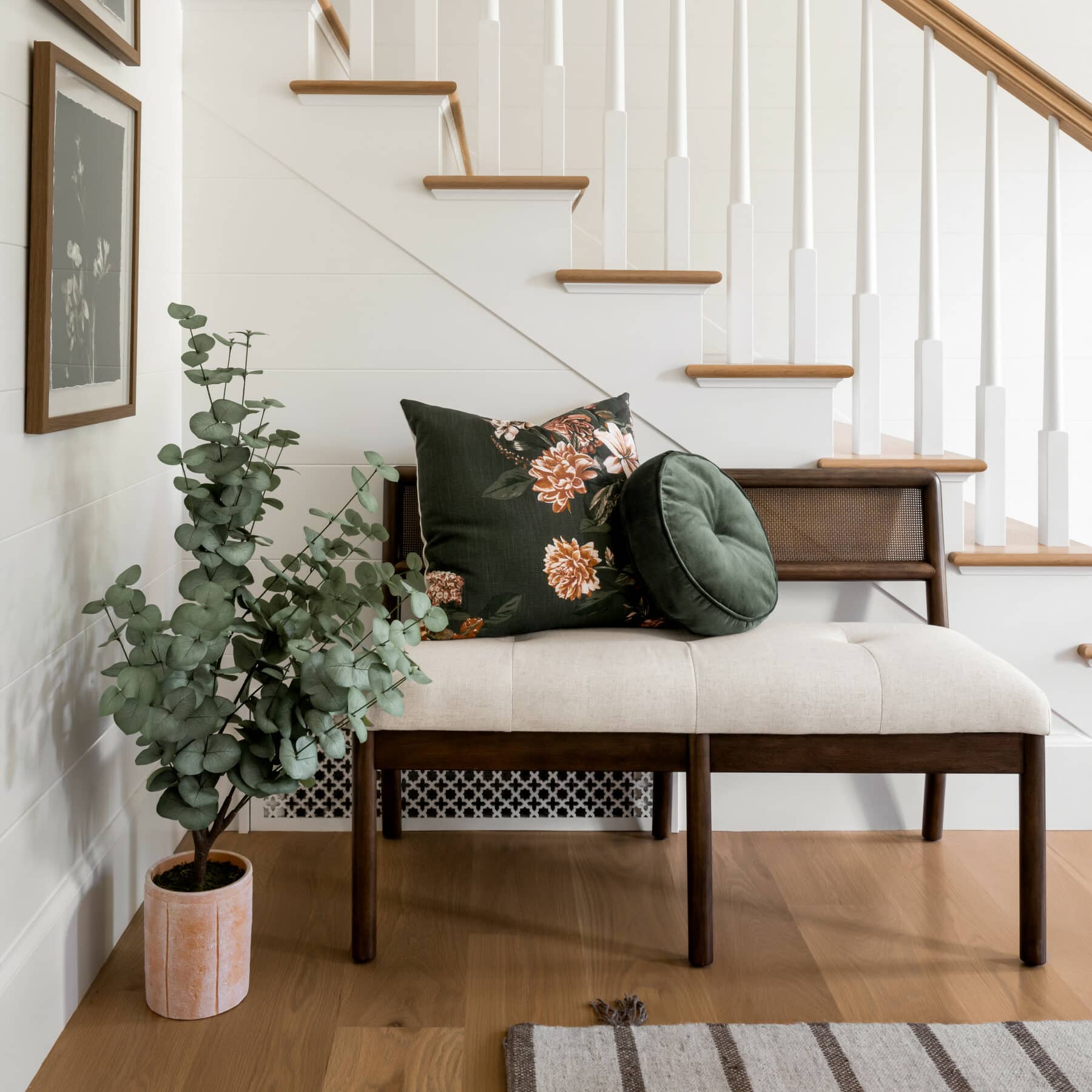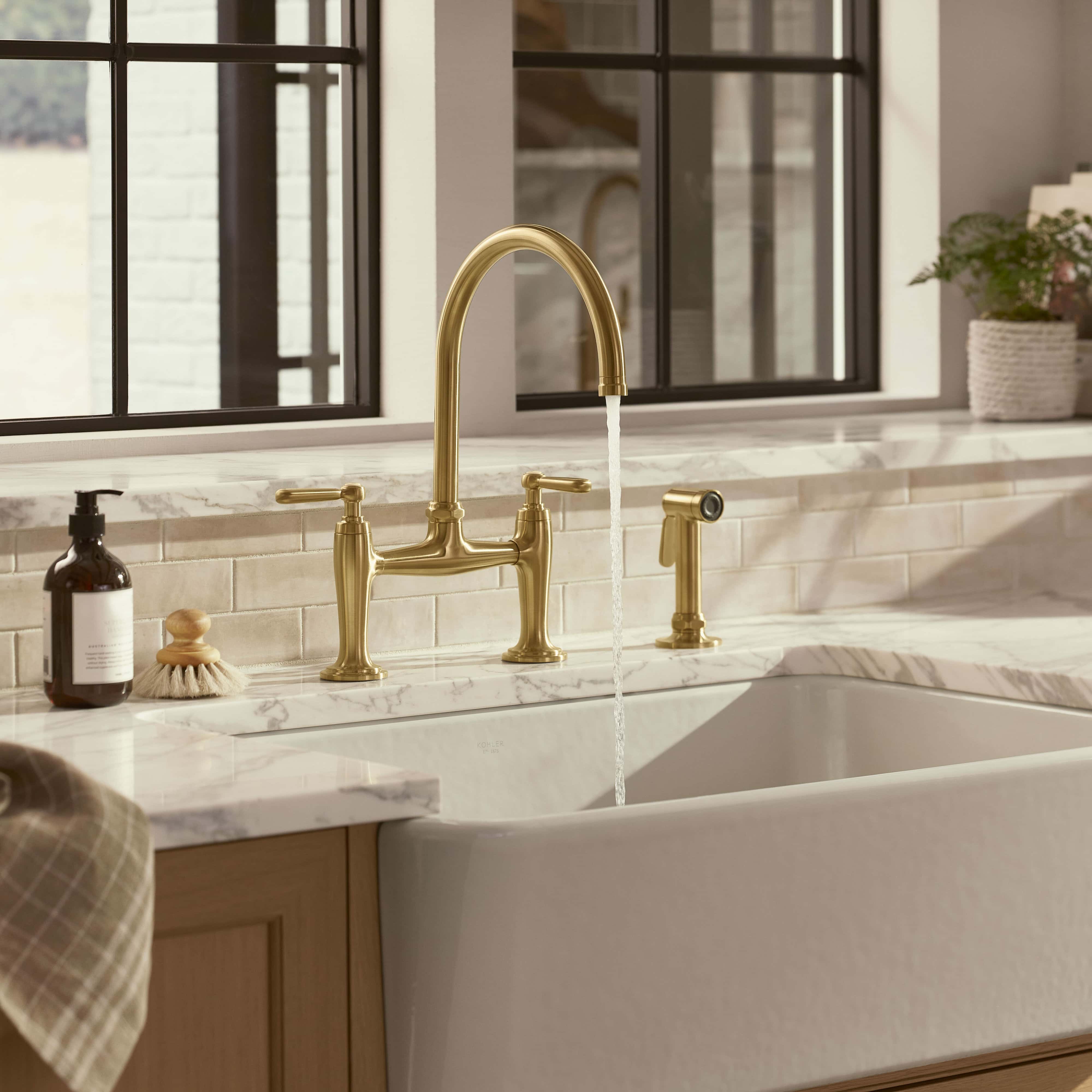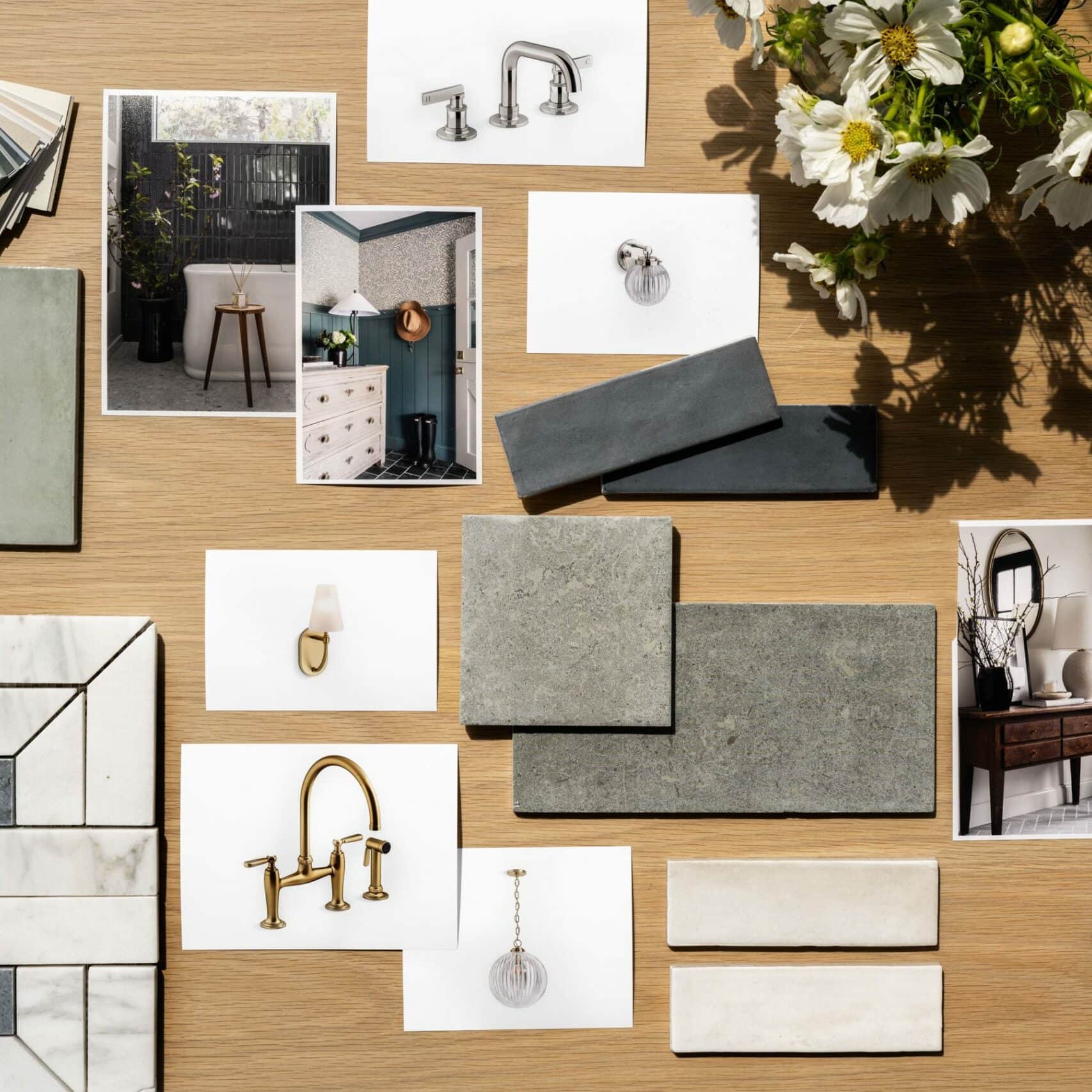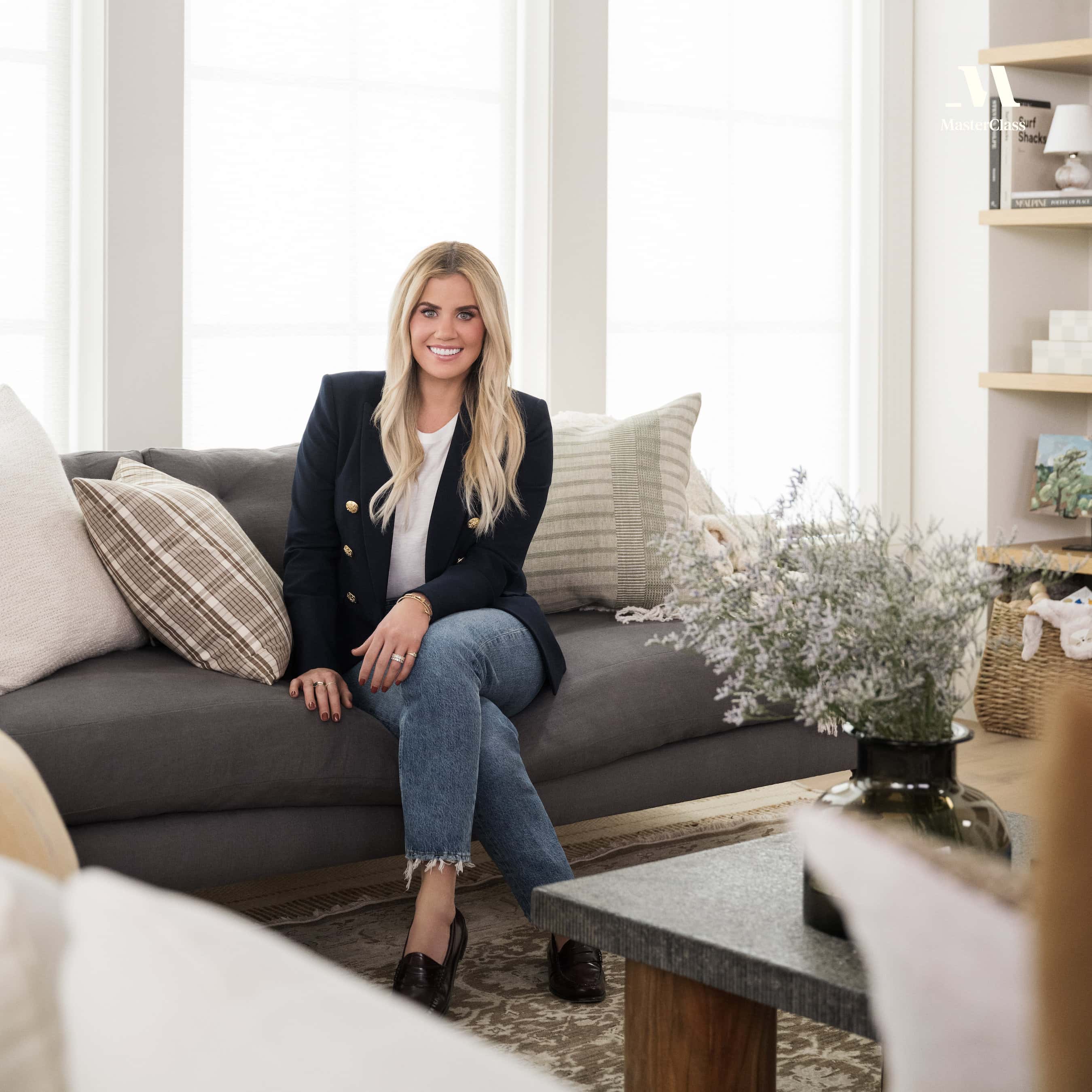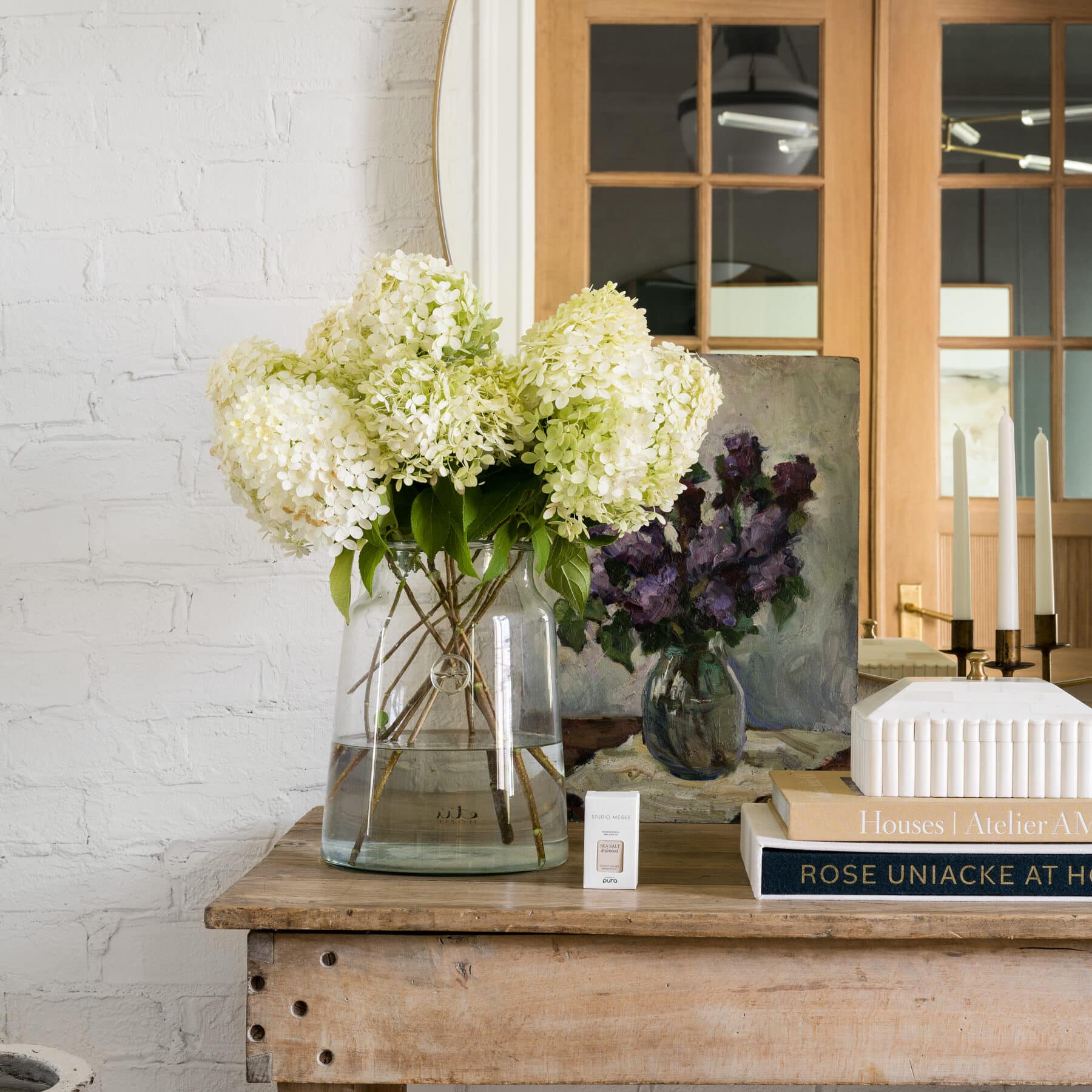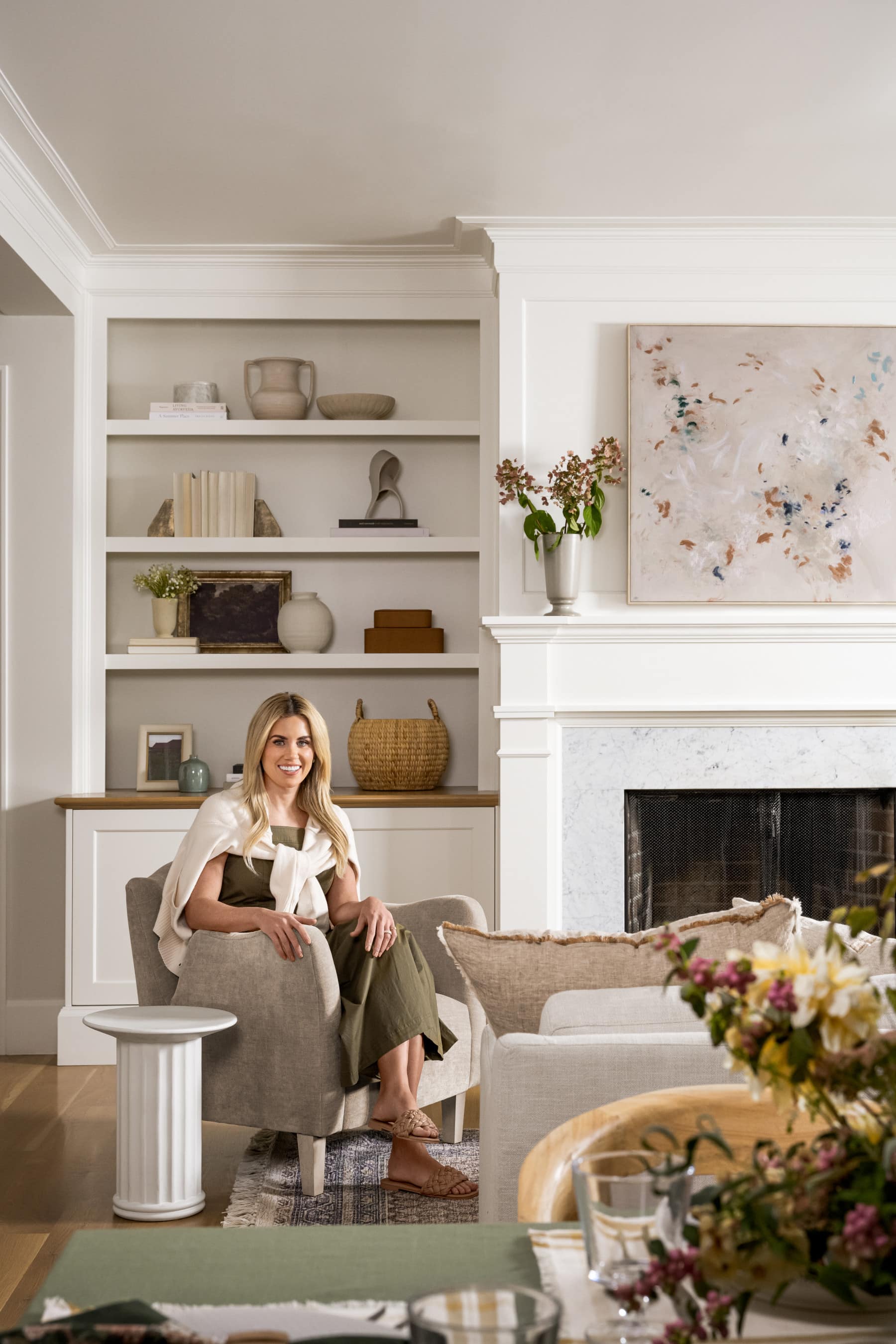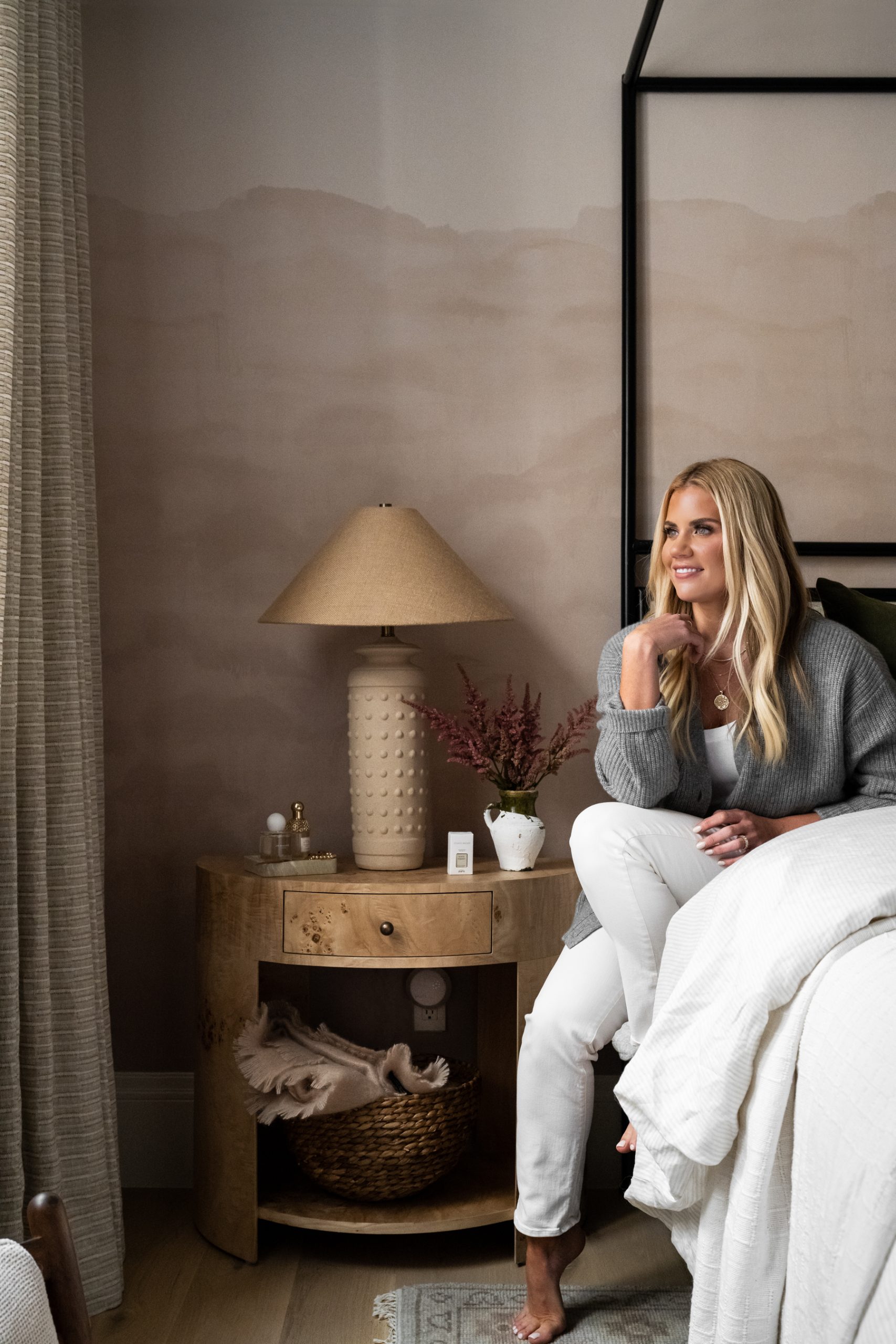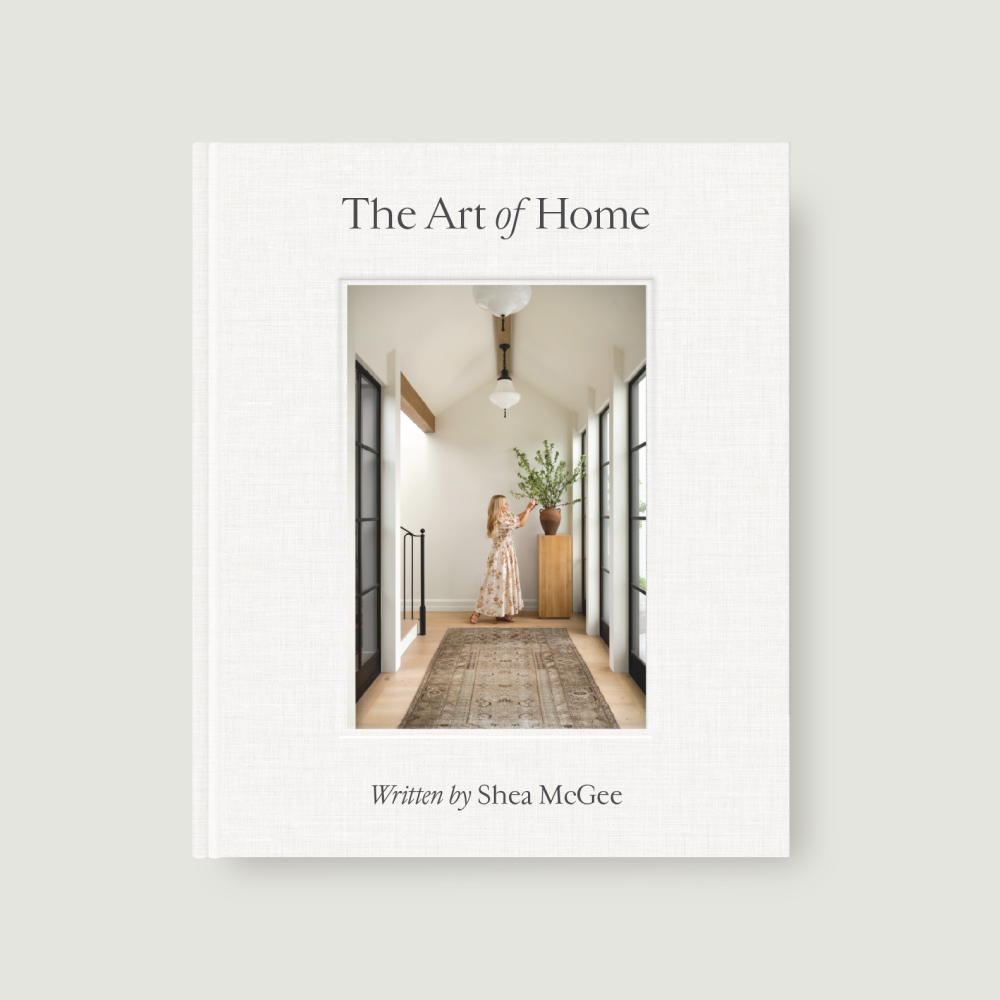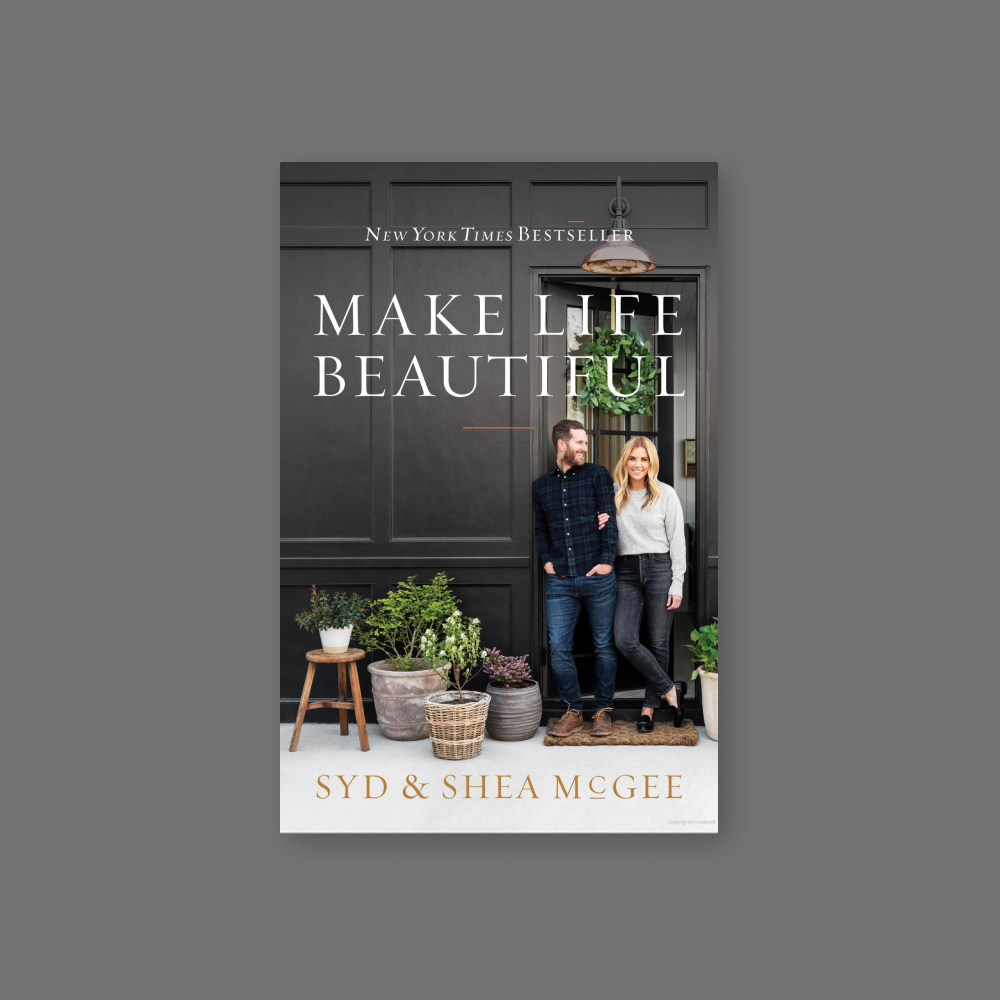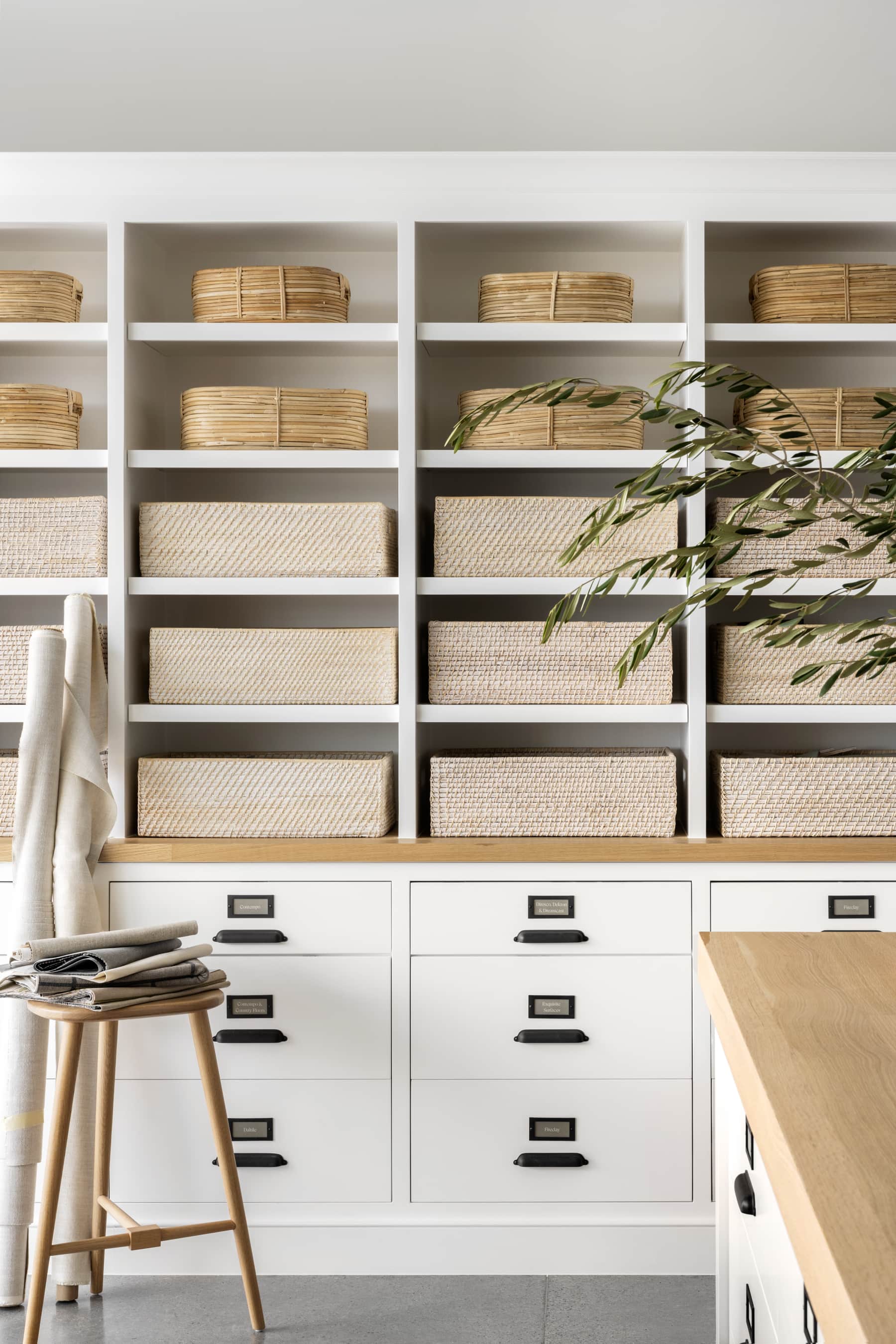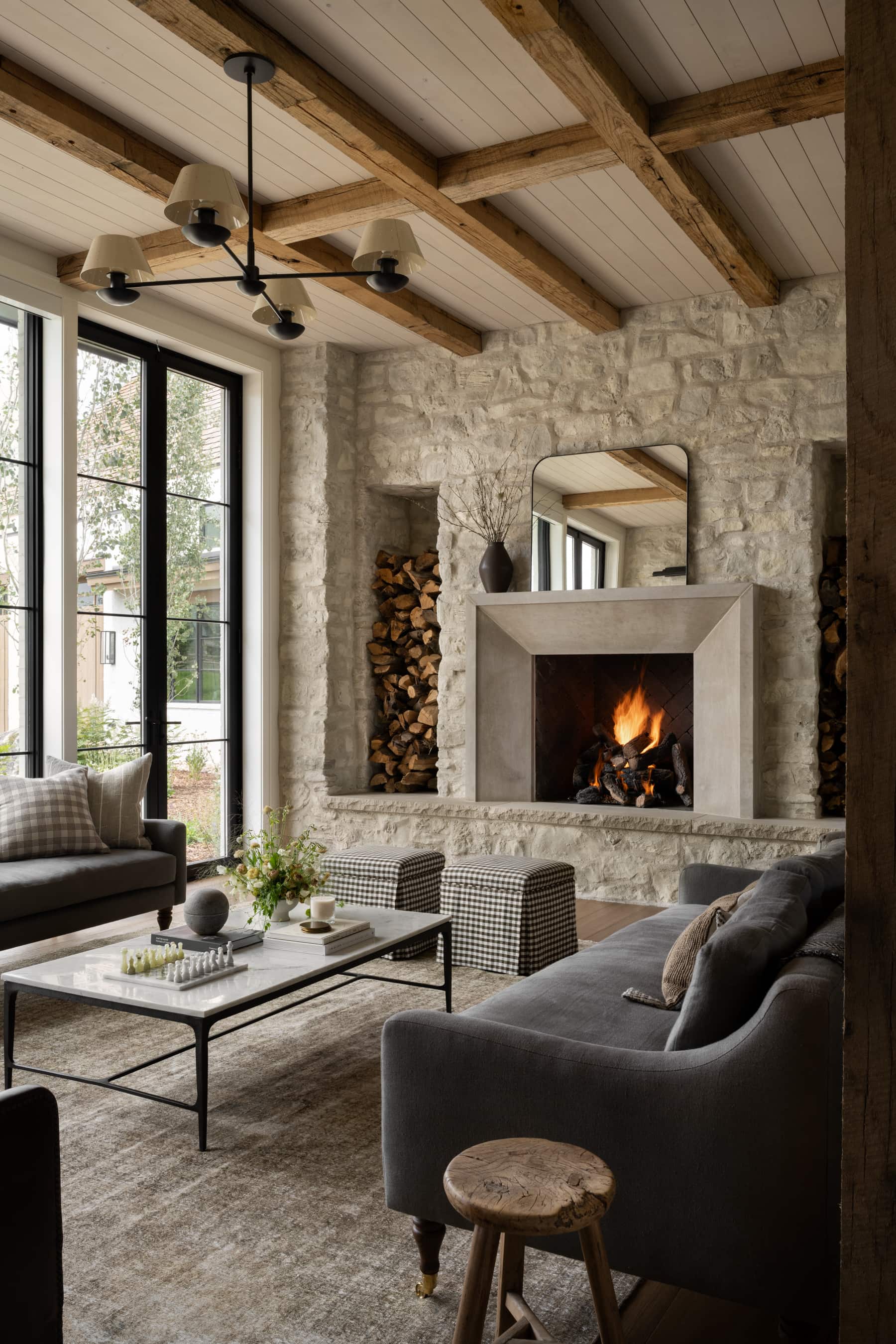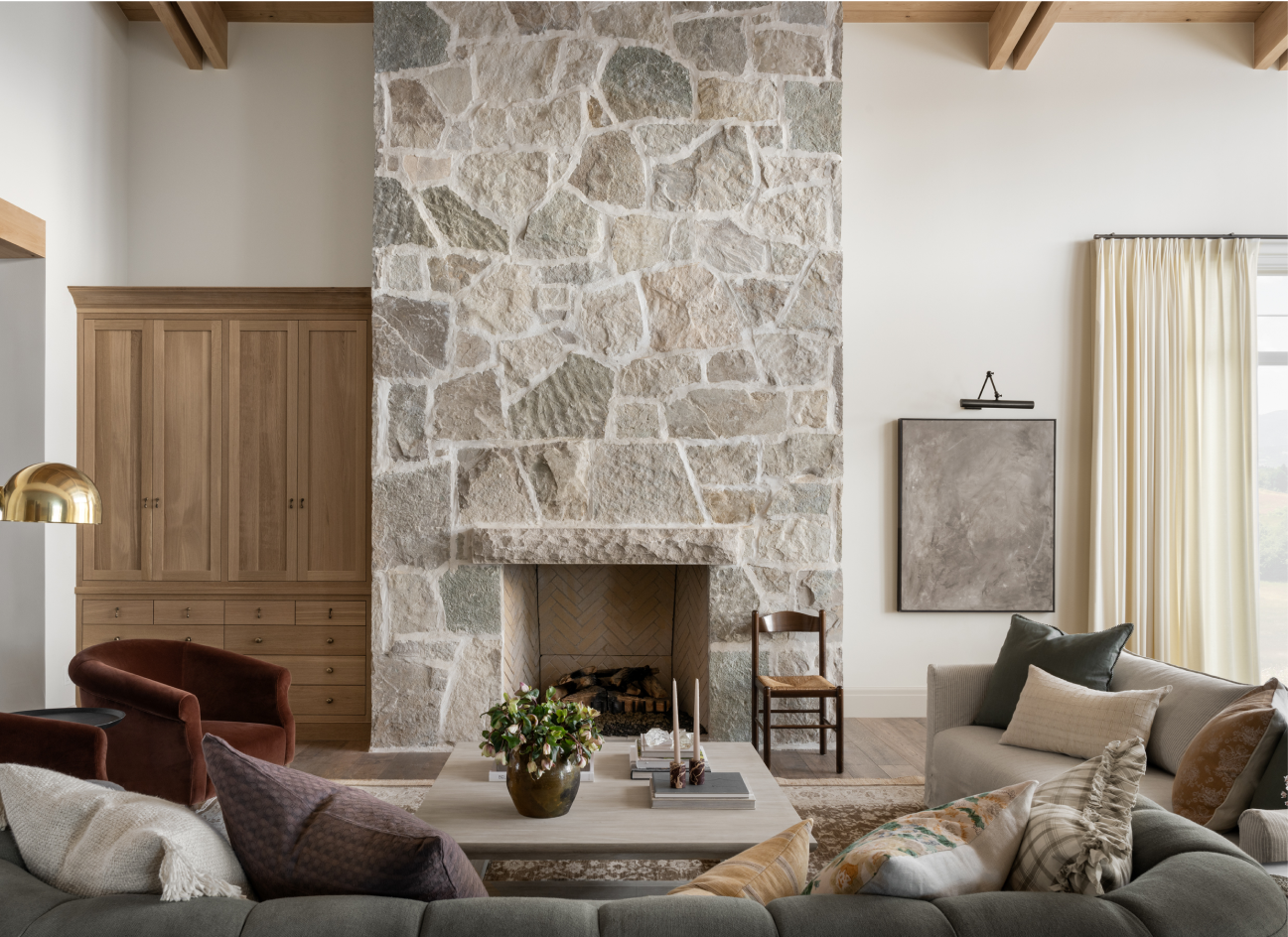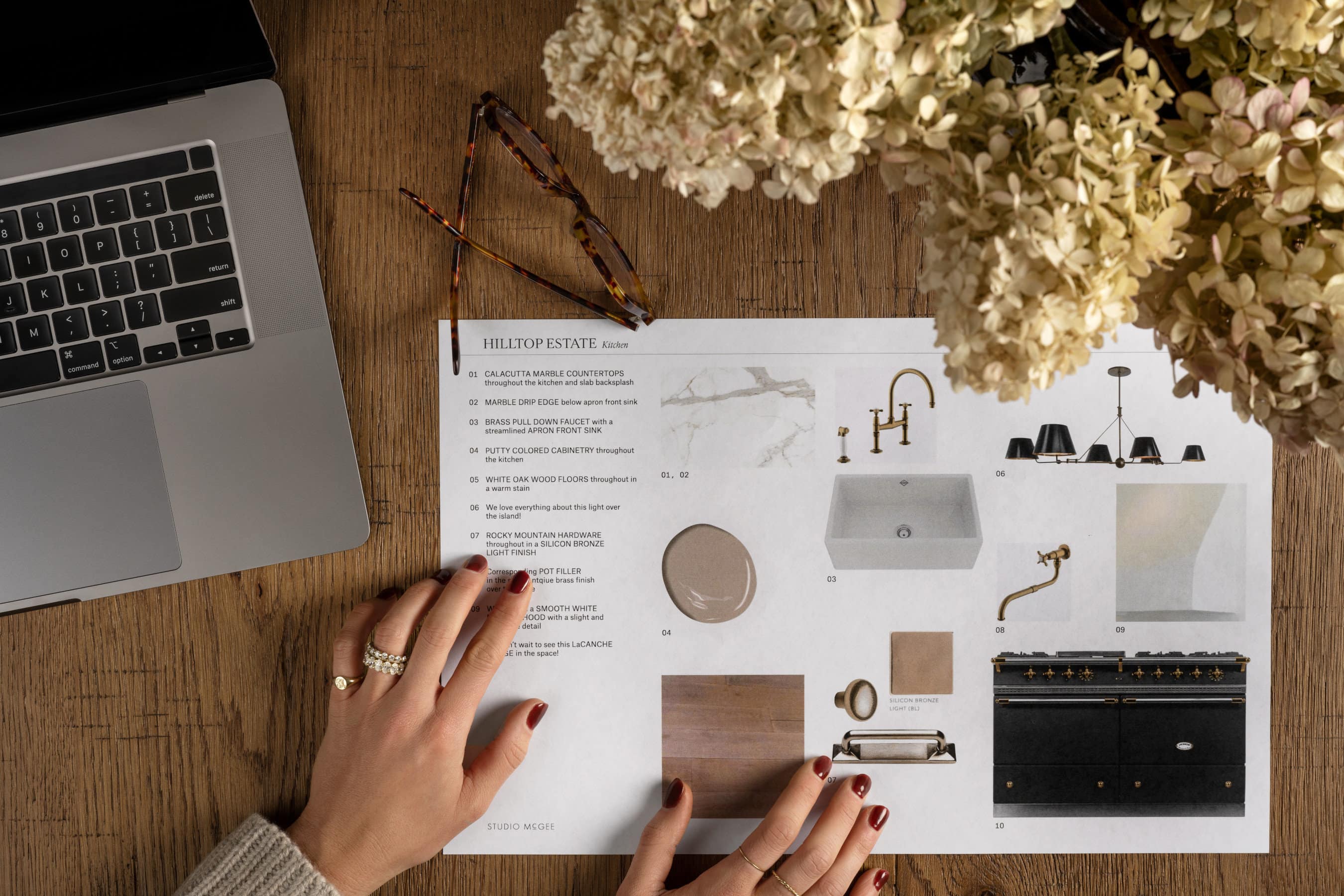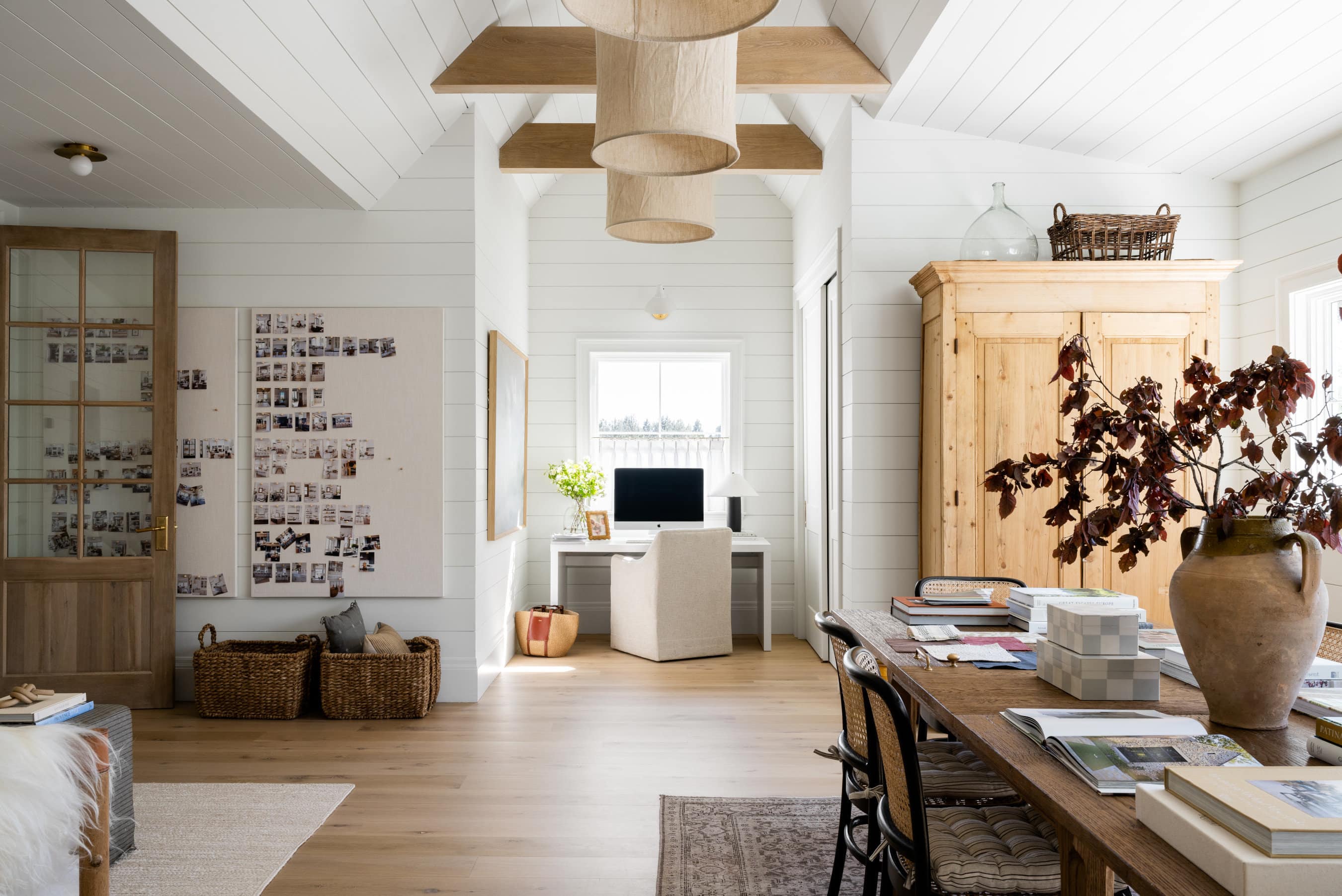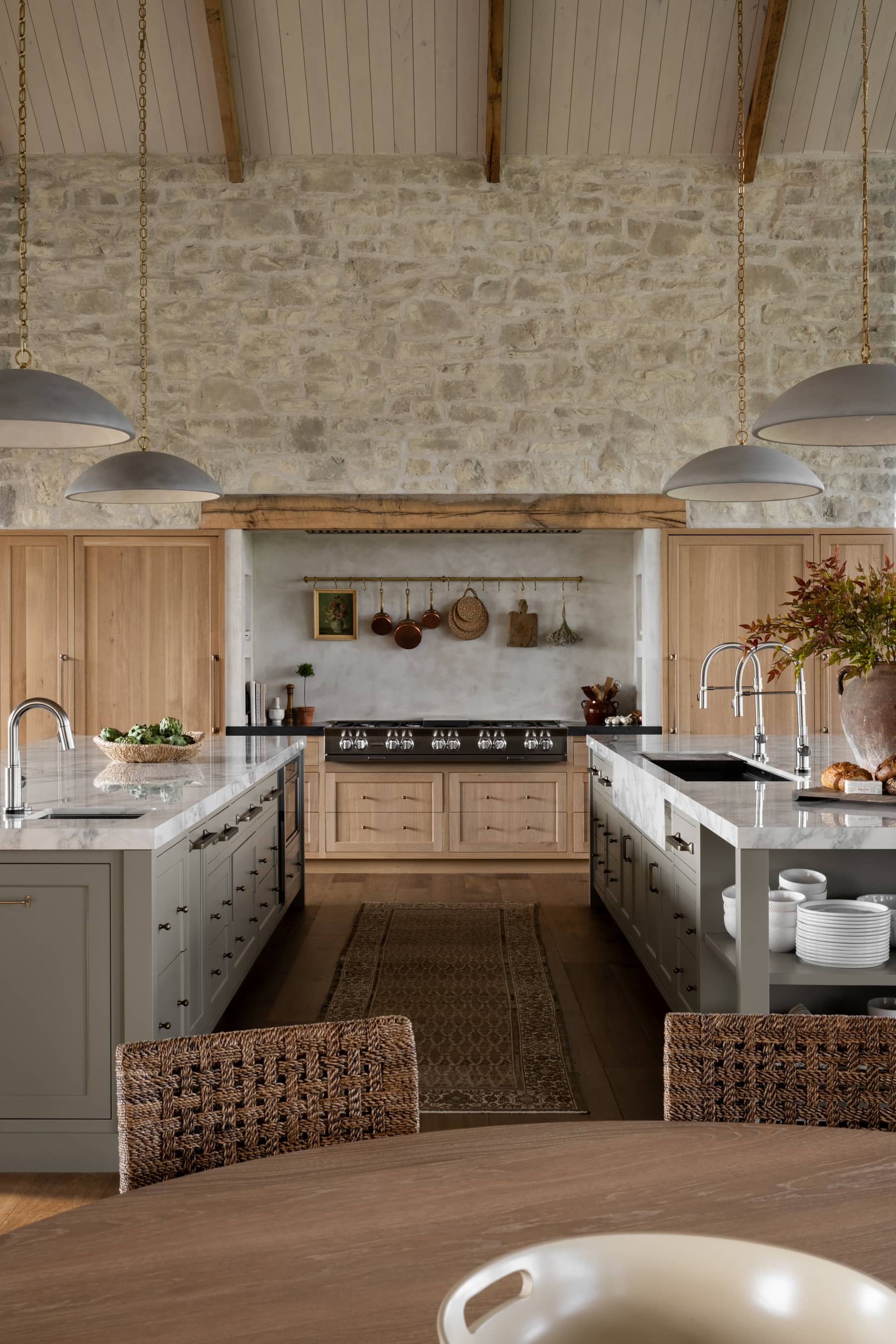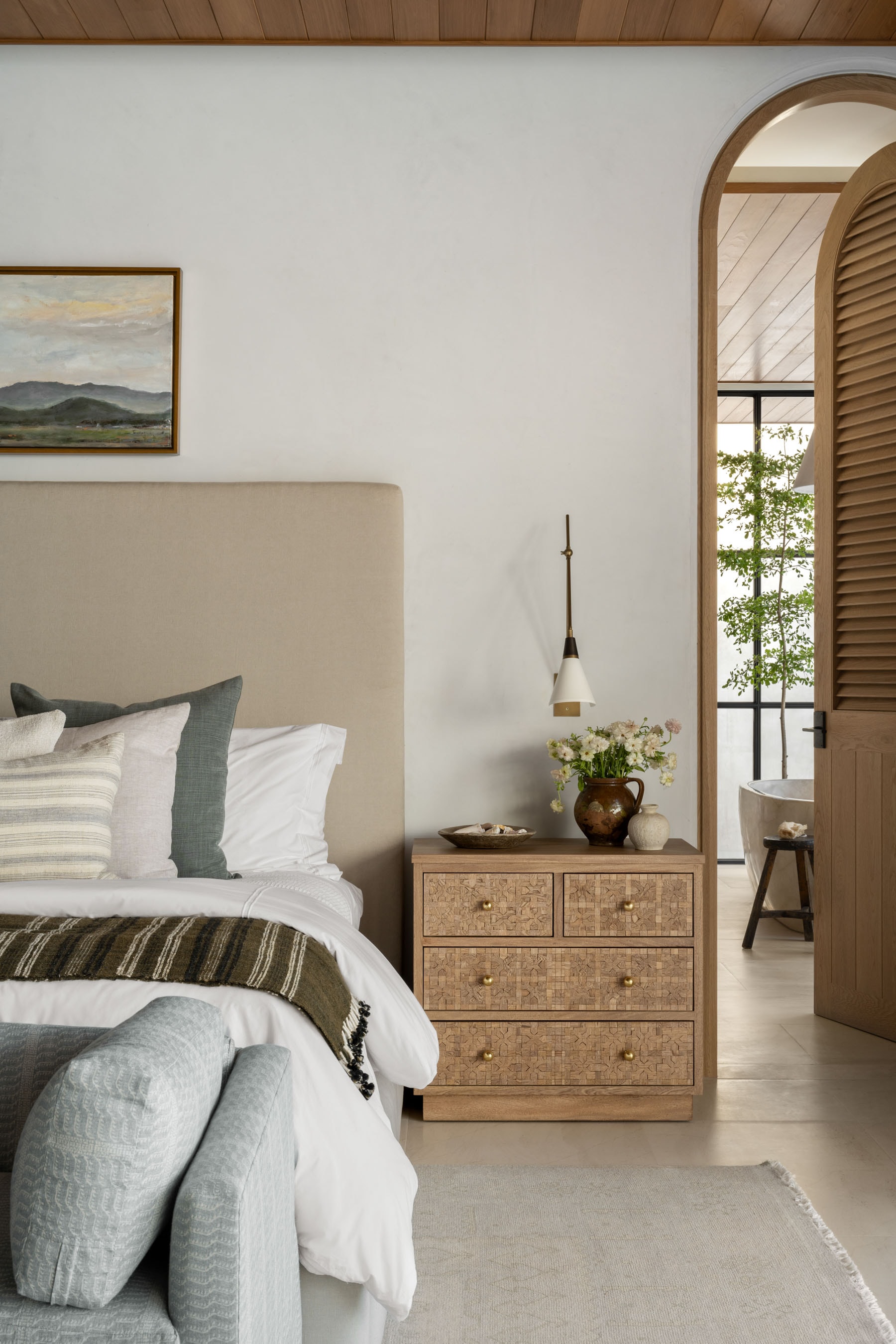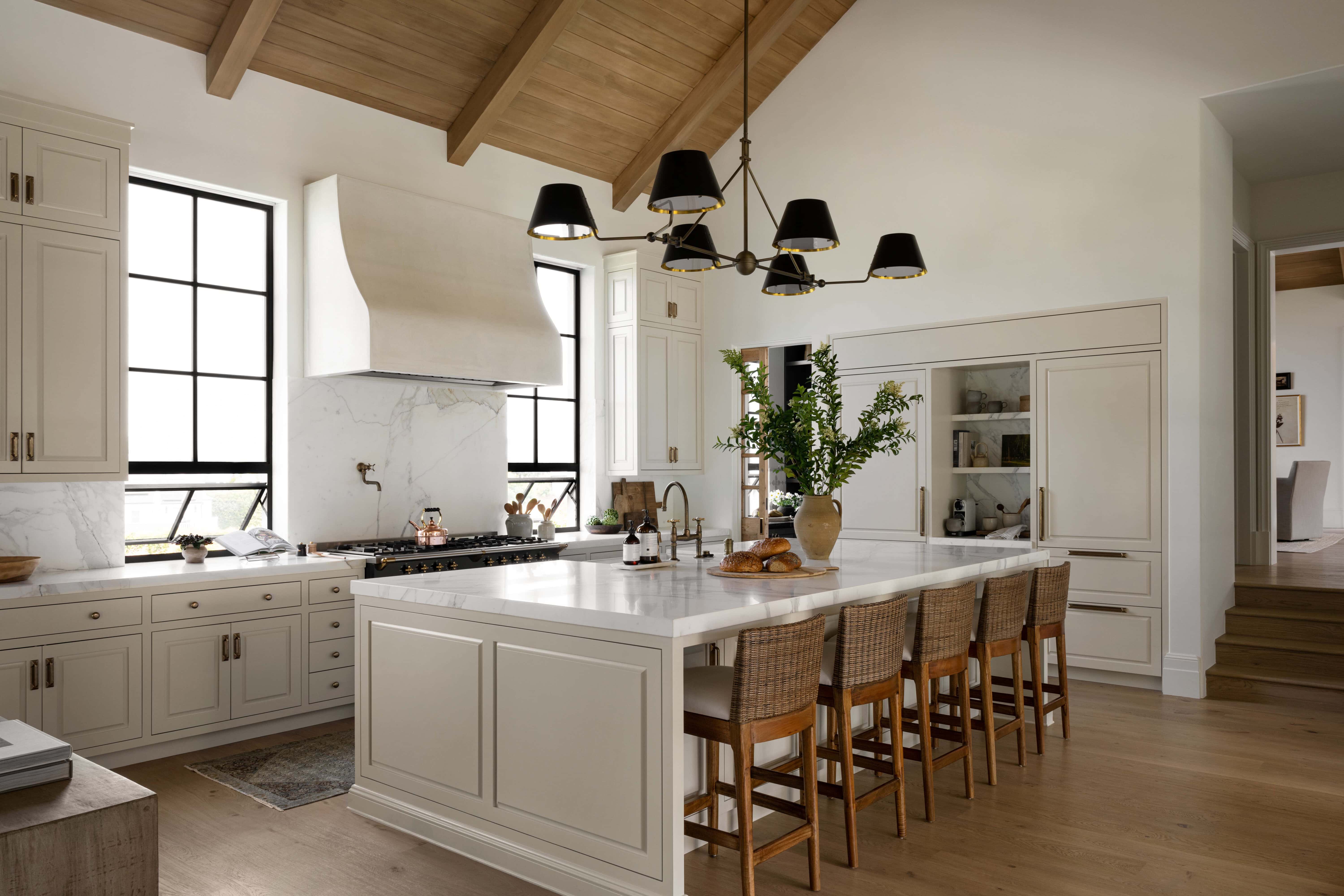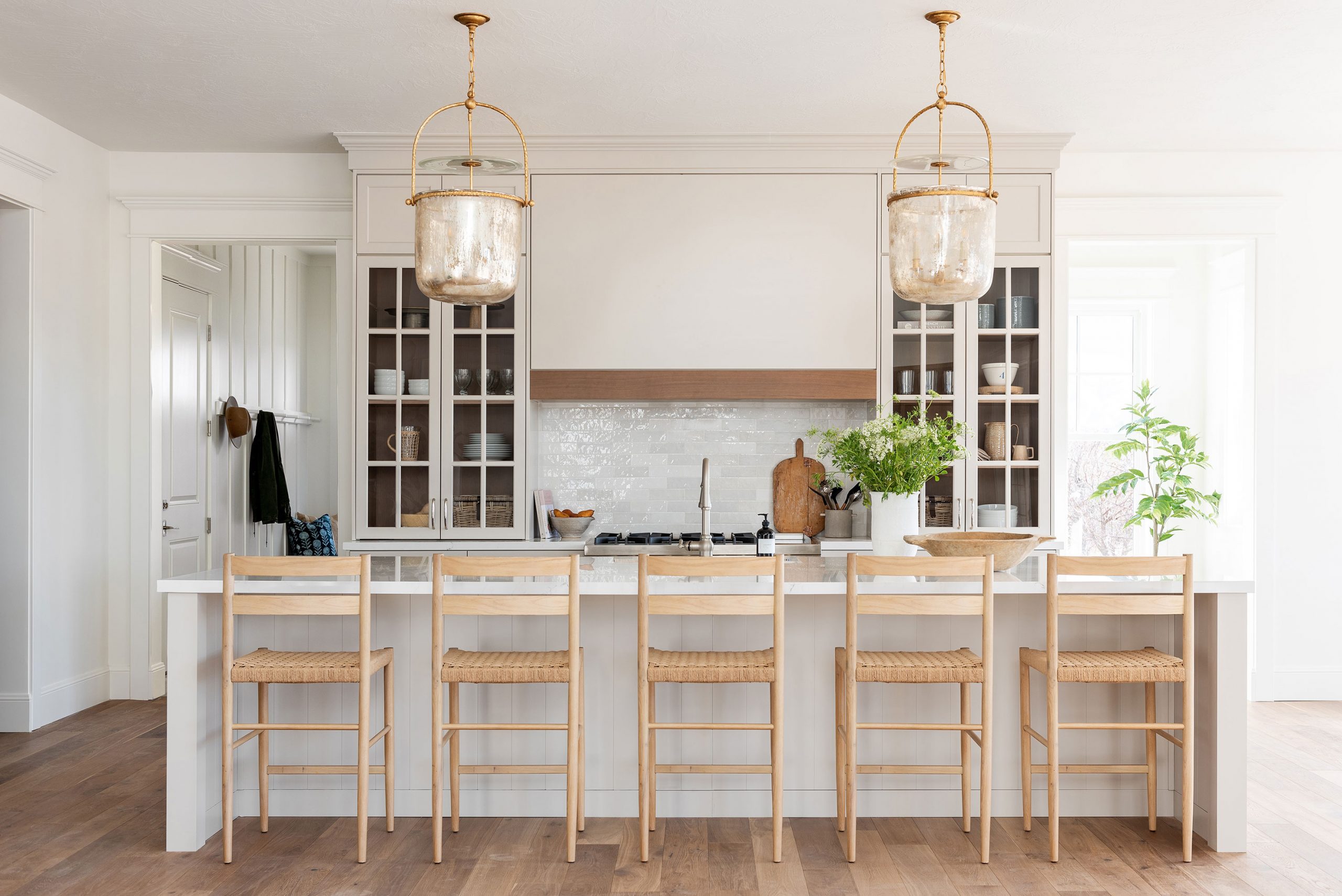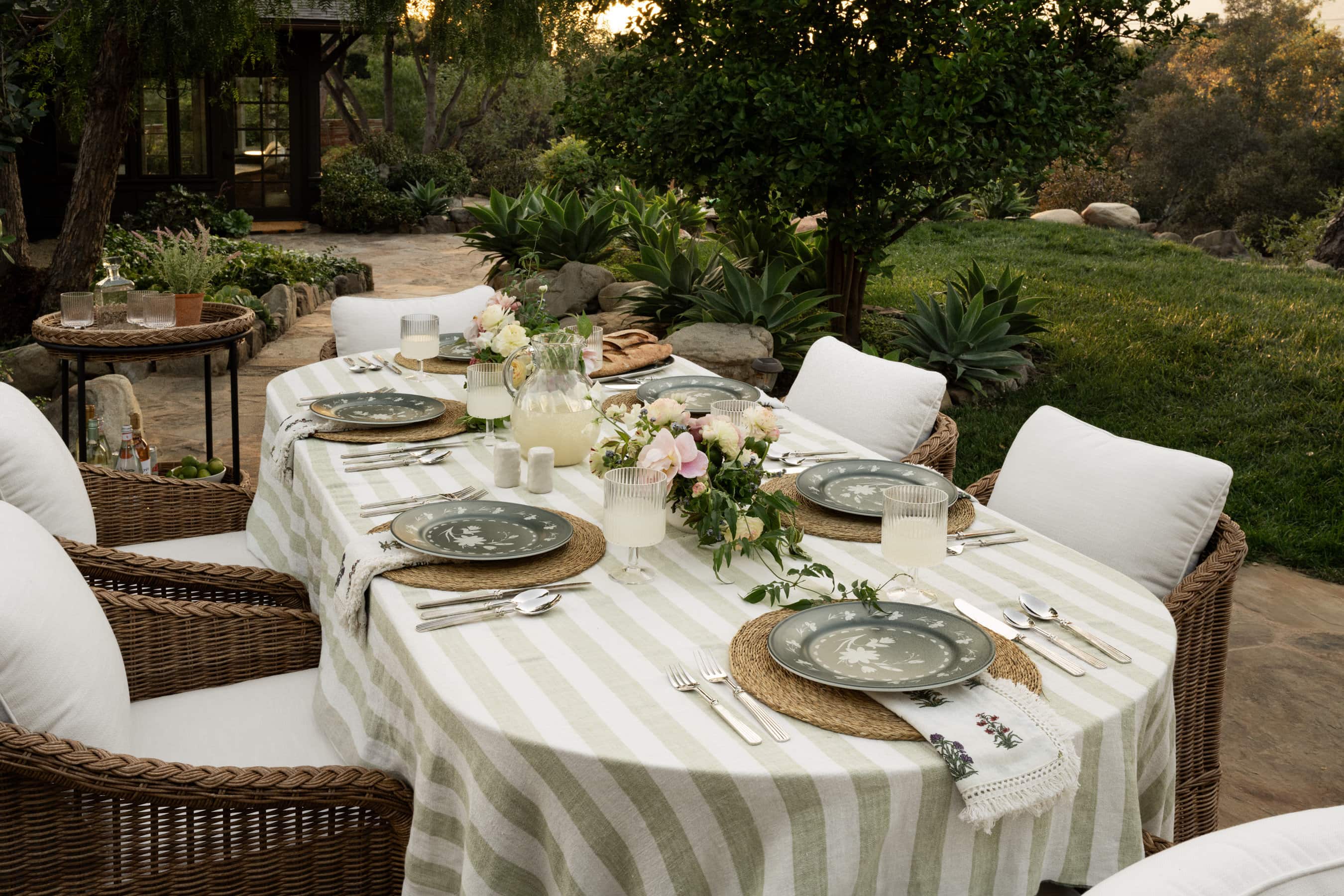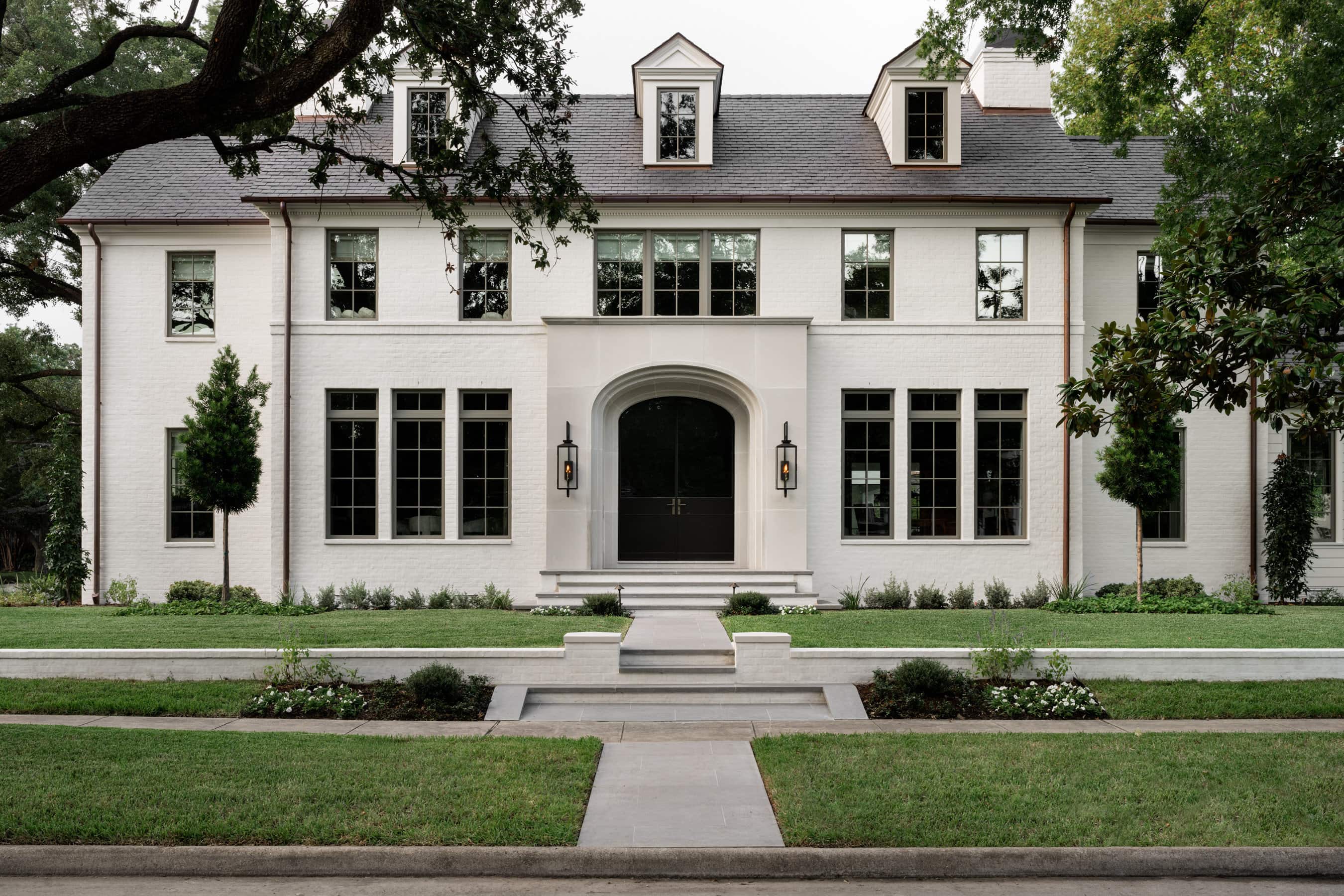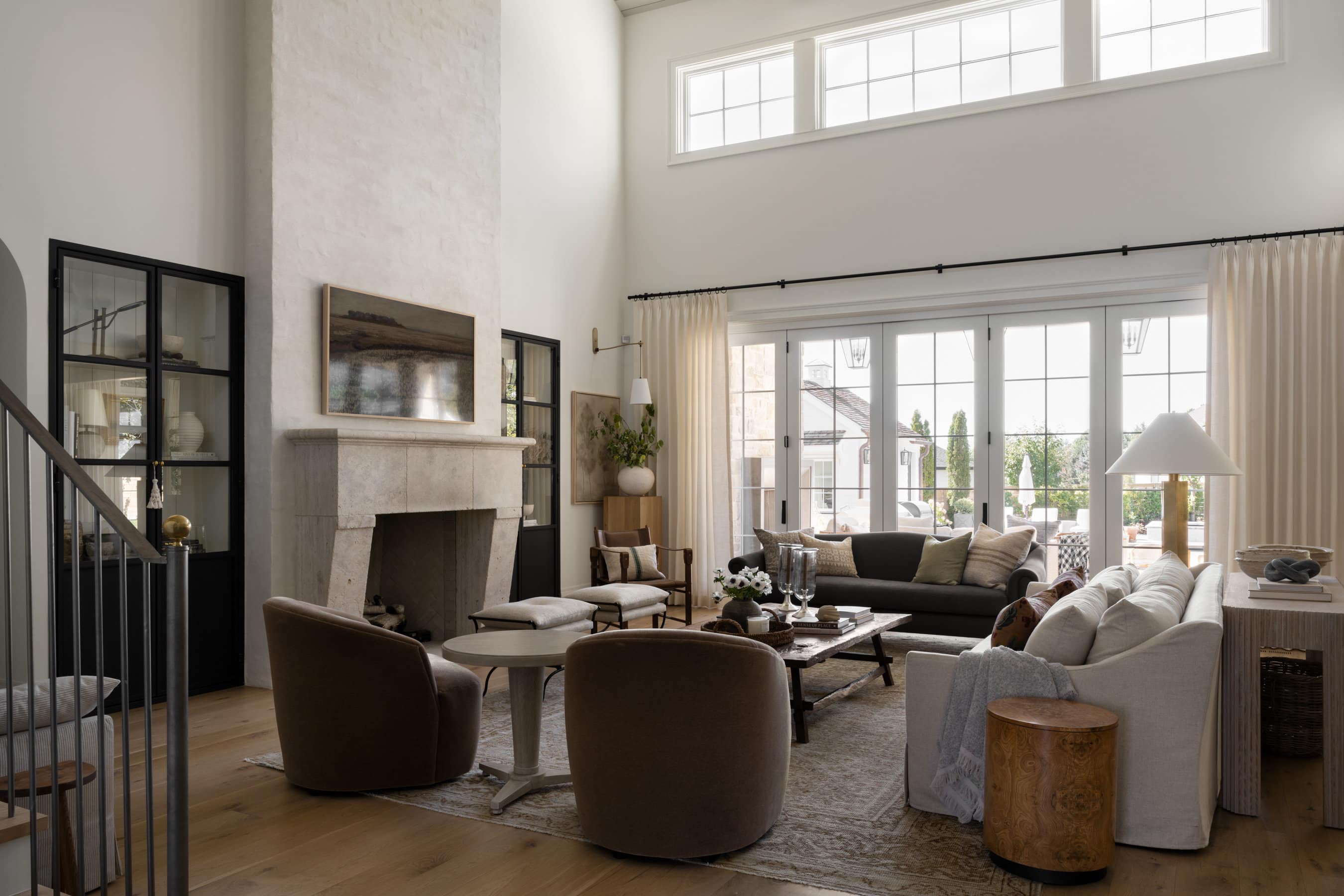Rug Guide: Simple Tips For Each Room
All of your rug questions answered
26 May 2021 -
Rugs are essential to every home. We love the way they bring character, warmth, and color to each space.
However, rug placement can be tricky, and we get more questions about rugs and rug sizing than any other category! After years of measuring, placing, and styling rugs for all kinds of rooms, we’ve learned a few tricks that make rug buying a breeze!
Scroll through our room-by-room guide to read our best tips and see example photos.
In the living room
– Make sure the front legs of the furniture are on the rug.
– The rug should have at least 6” on each side of the furniture.
– Typical sizes are 8×10, 9×12, 10×14
Stylist tip: Make sure your rug is large enough for your space! If the size isn’t substantial it will completely throw off the flow and feel of the room. One of our golden rules is to make sure the front two legs of the main furniture pieces are on the rug. We would never leave a rug floating in the middle of the room!
Rug Guide: Simple Tips For Each Room
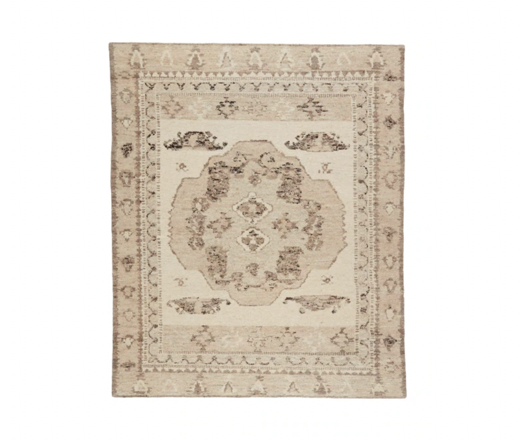
Gleason Hand-Knotted Wool Rug
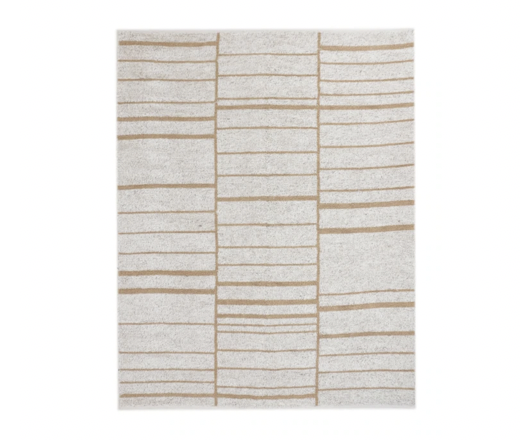
Gordes Shag Rug

Searcy Rug
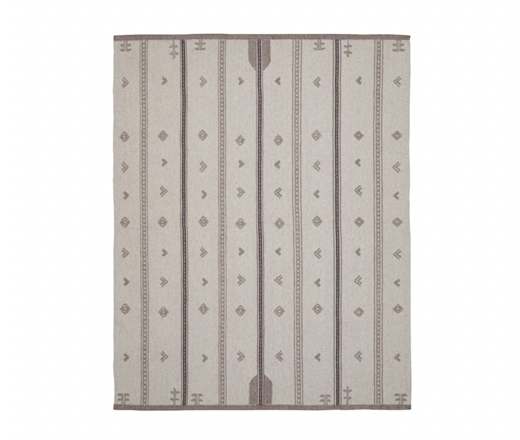
Calistoga Rug
In the dining room
– Make sure the dining chairs are all on the rug around the entire table
– Make sure the rug extends the table at least 8” on each side
– Leave at least 1 foot of floor around the perimeter of the room
– Typical sizes are 6×9, 8×10, 9×12
Stylist tip: For the best result, we like our rugs to fill the space, but not completely cover the floor! We’ve found that keeping 12-18 inches between the rug and the wall does the trick.
Rug Guide: Simple Tips For Each Room
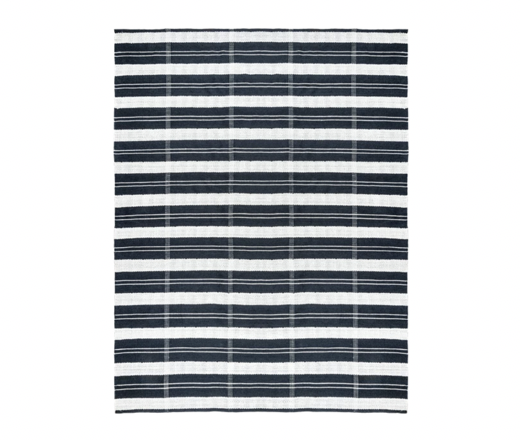
Penfield Indoor/Outdoor Rug
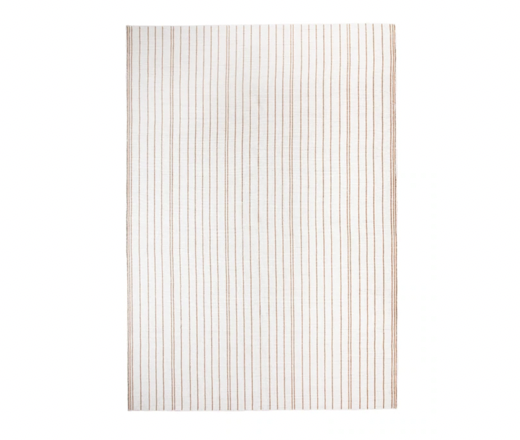
Bavaria Indoor / Outdoor Rug
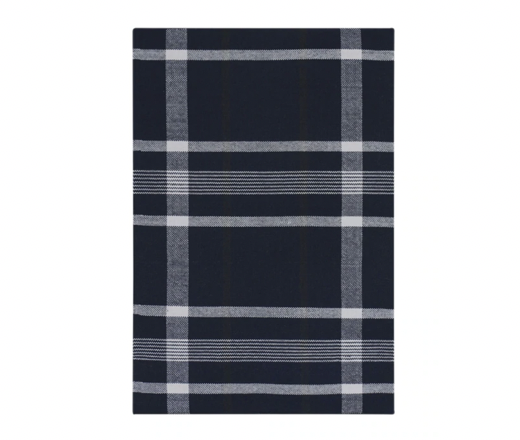
Edina Plaid Indoor / Outdoor Rug
In the bedroom
King Bed:
– Leave at least 8” of space from the nightstands to the beginning of the rug.
– Make sure the rug extends the bed by at least 1 foot.
– Typical rug size for a King bed is 9×12.
Queen Bed:
– Make sure your rug doesn’t extend the nightstands.
– Make sure the rug has at least 8” of space on the sides of the bed.
– Typical rug size for a Queen bed is 8×10
Stylist tip: We always recommend purchasing a rug pad with your rug! Not only does it make it a lot more comfortable, but it’ll save the life of your rug and help keep it in place. If there isn’t a size available in the pad for the rug you’d like, you can always cut the pad. We use this one!
Rug Guide: Simple Tips For Each Room
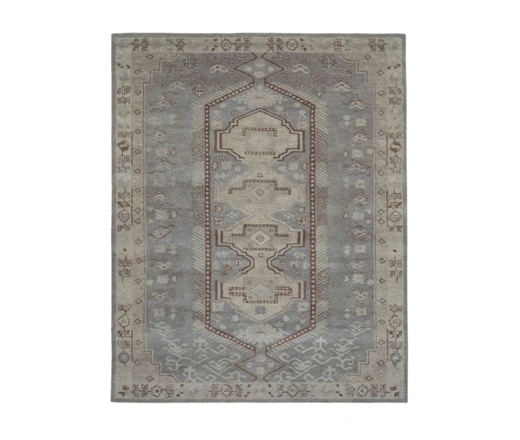
Lazio Rug
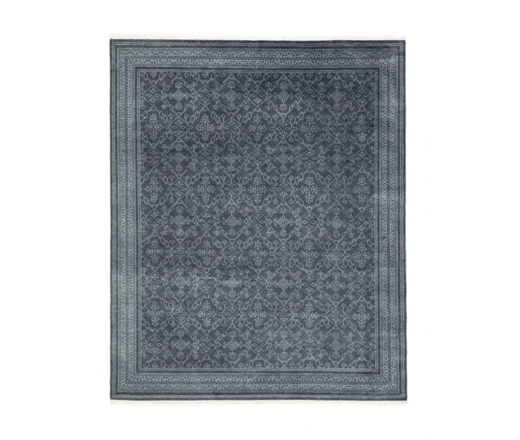
Kazan Hand-Knotted Rug

Anya Indigo Hand-Knotted Rug
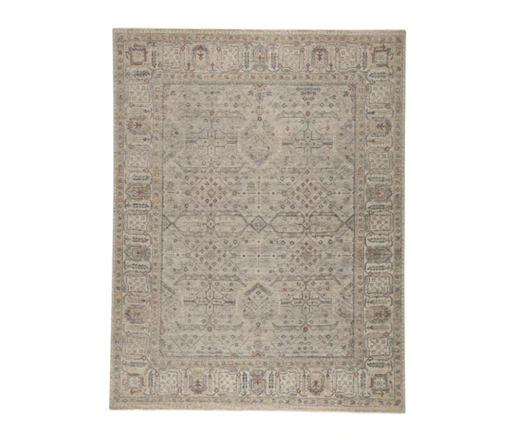
Mavis Wool Rug
Psst.. don’t forget to pin our rug sizing guide below, and keep scrolling for a few answered FAQ’s!
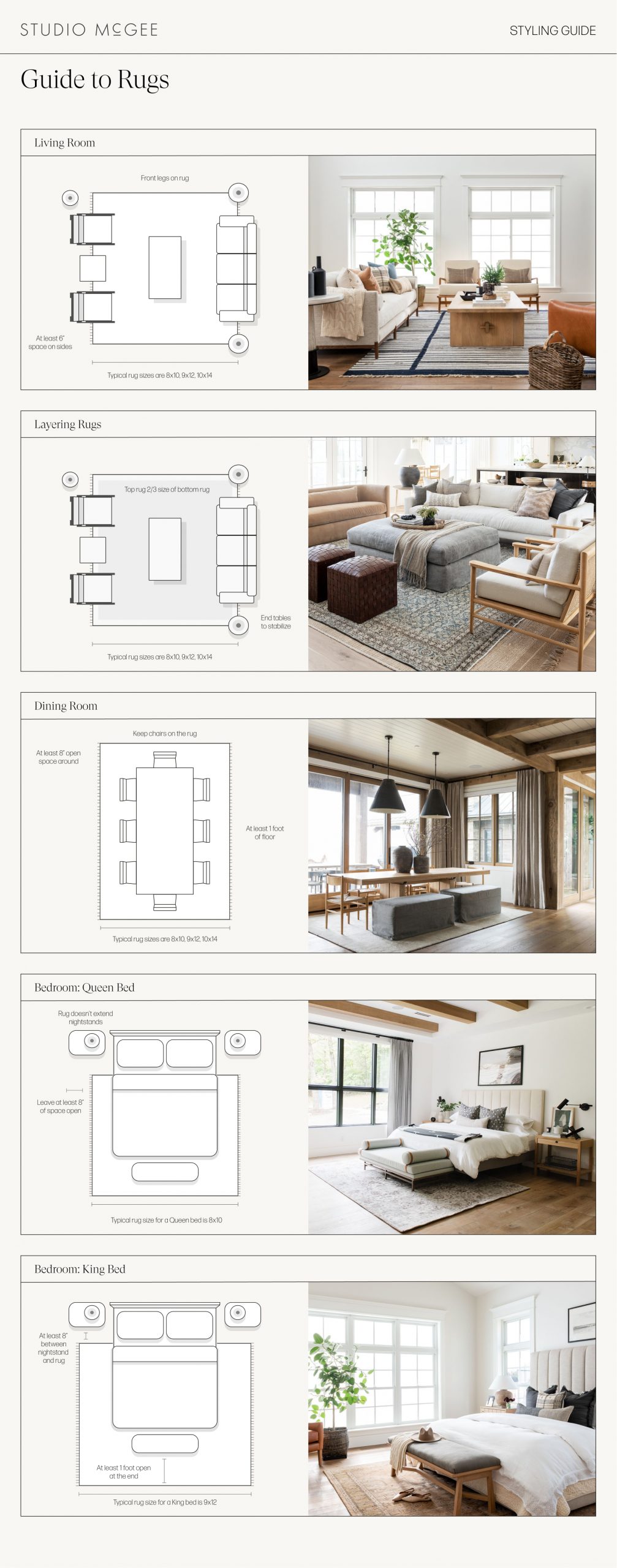
Frequently asked rug questions:
Can I layer a rug over carpet?
Yes, if you have a low-pile carpet. It doesn’t look or function well over a shag. We typically don’t have a lot of wall-to-wall carpet in our projects, but we do put them in bedrooms and play rooms!
Can I layer rugs over rugs?
Yes! We do this a lot with vintage rugs! They always bring warmth and character, but they’re one of a kind nature means sometimes you don’t get the exact dimensions you want. Sometimes a pattern can be overwhelming in a larger dimension and we’ll break it up with a natural rug. The biggest tip for layering, is put your rug over a natural rug, but think about scale when you do! You want it to feel intentional rather than looking like a postage stamp.
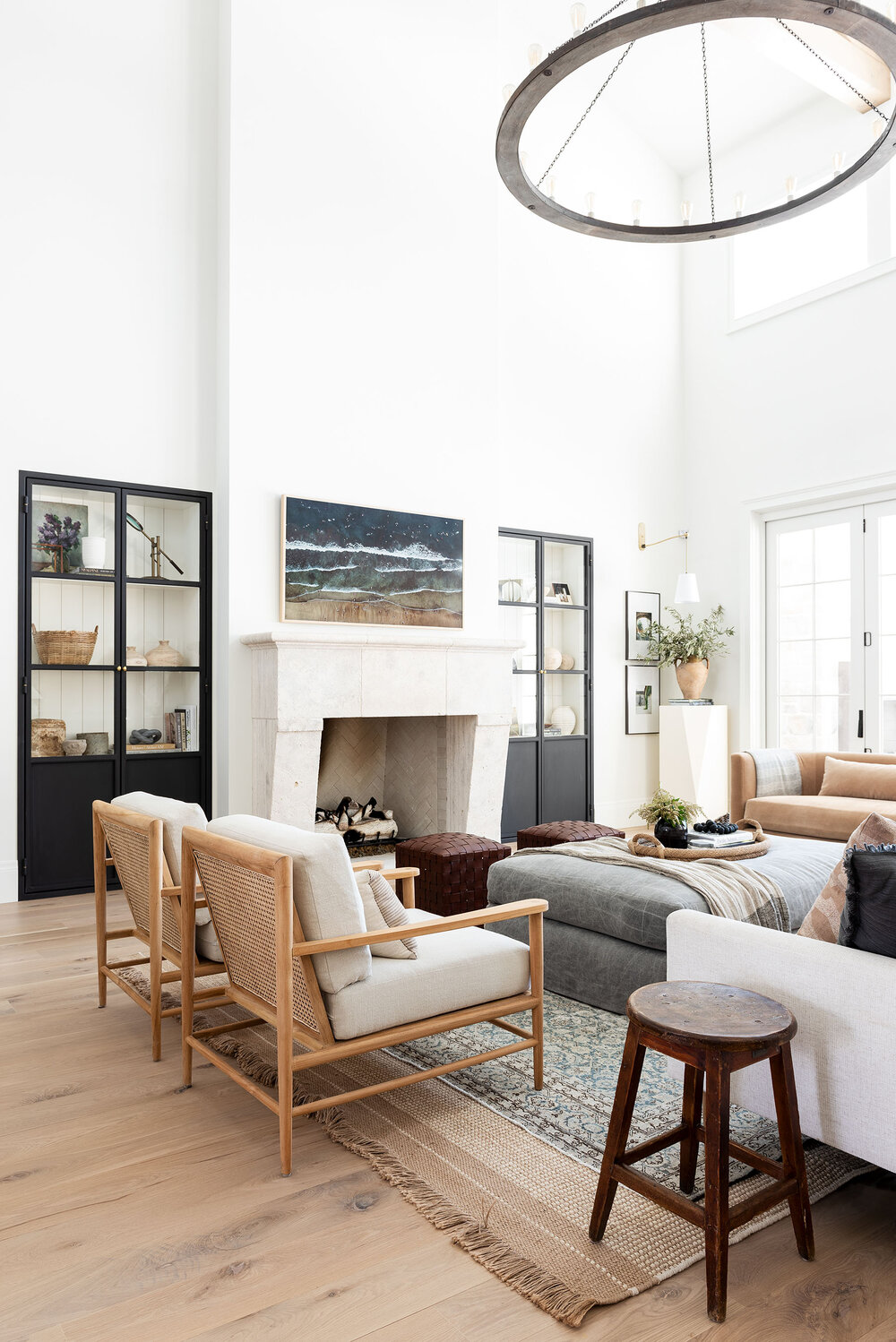

How do you pair two rugs in an open concept living space?
We typically choose rugs that complement rather than compete. For example, if you have a patterned rug in the living room, go for a jute in the dining. We recently shared a more in-depth post about this here if you’re interested in finding more inspiration!
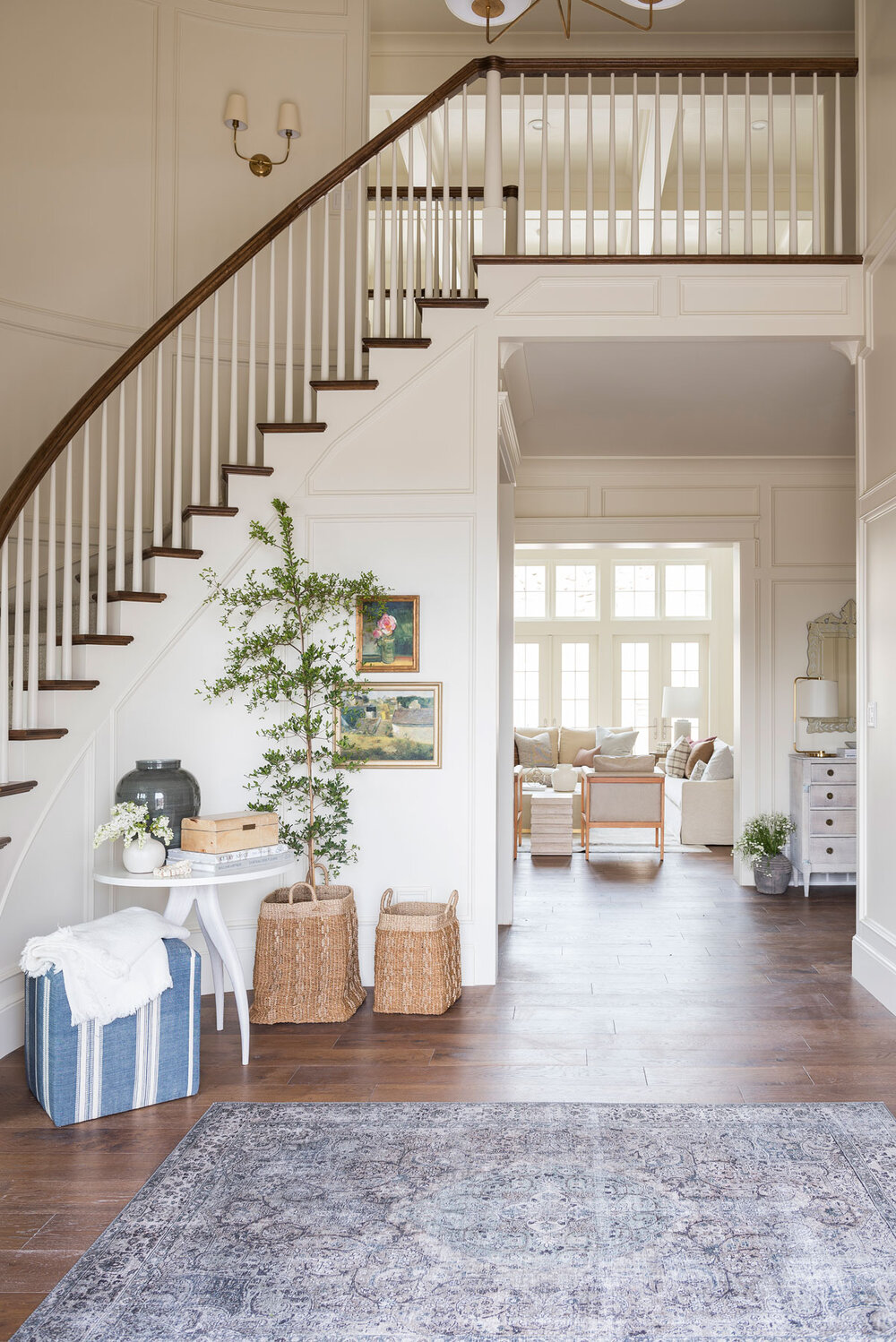
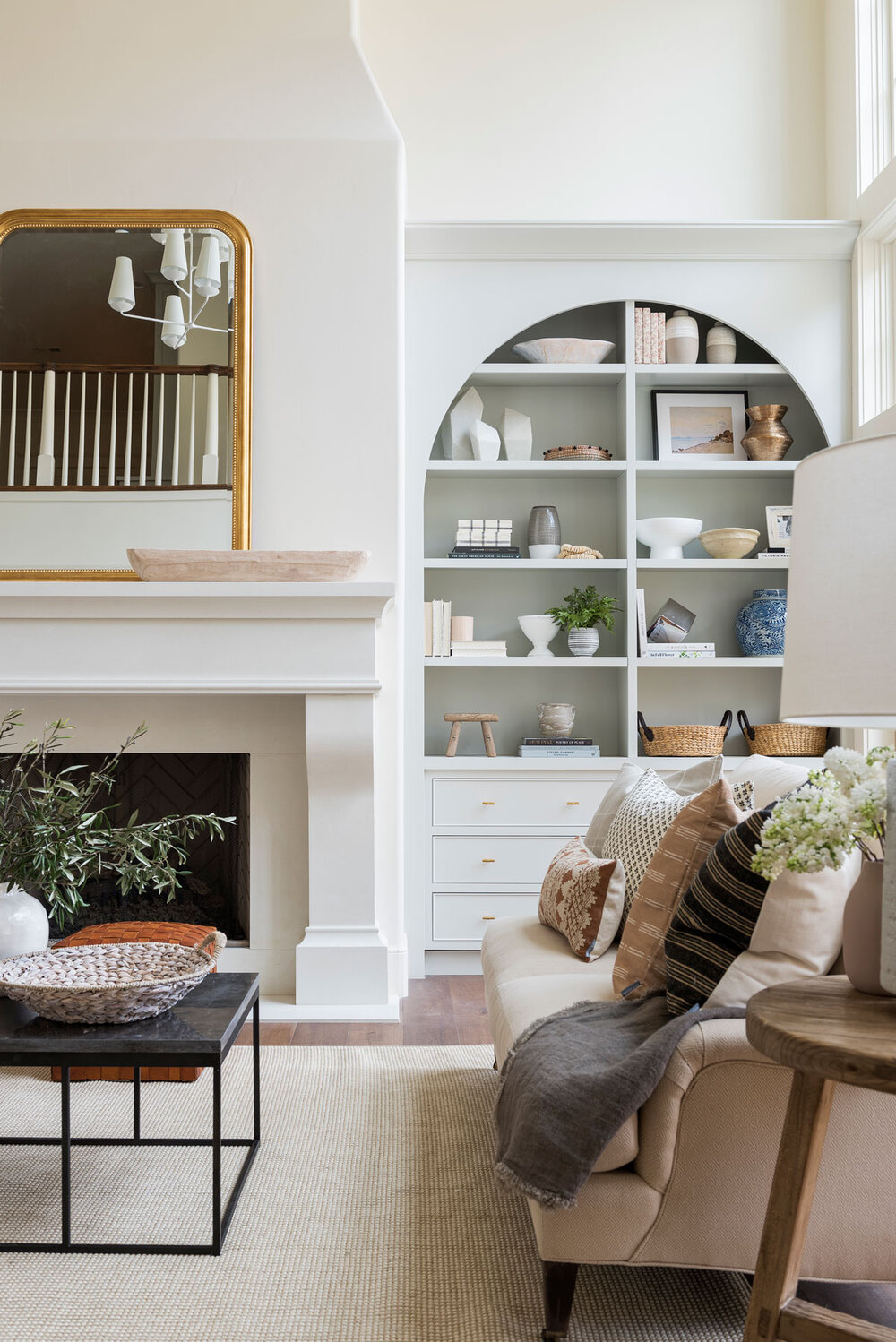
Which rugs are best for mudrooms, kitchens, and other high traffic areas?
We love using indoor/outdoor rugs, vintage rugs, and wool rugs are great for high traffic areas like front doors and mudrooms.
Why are some rugs so much more expensive than others?
Similar to how one house will differ in price from another house the of same size, construction and material all play into the cost of rugs. To learn more about the behind the scenes details of product development, check out our Q&A with McGee & Co.’s product director here.
